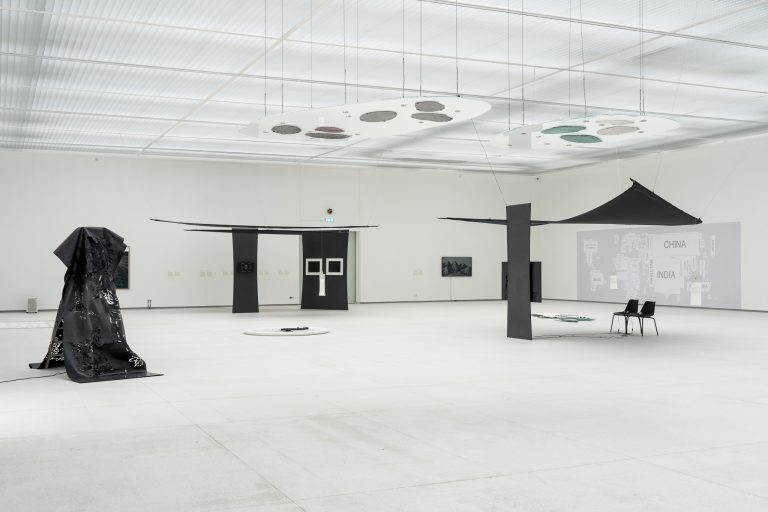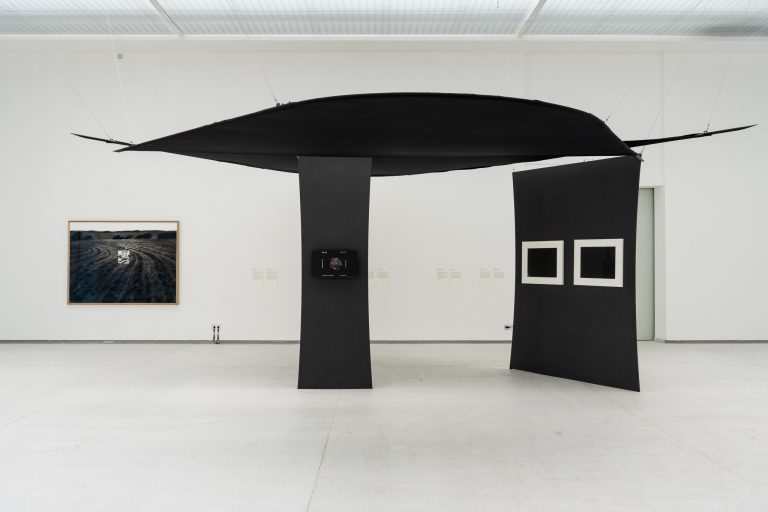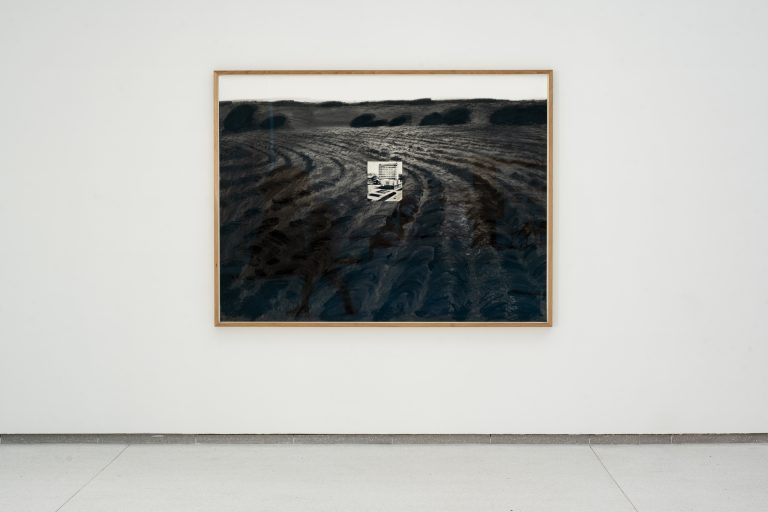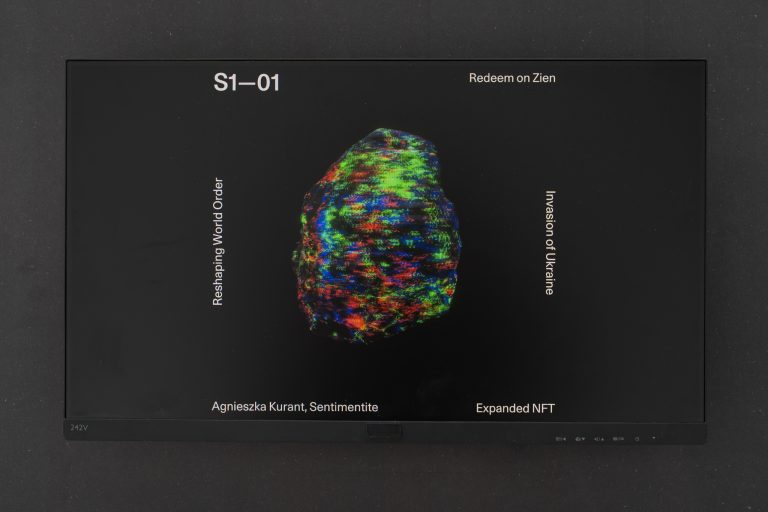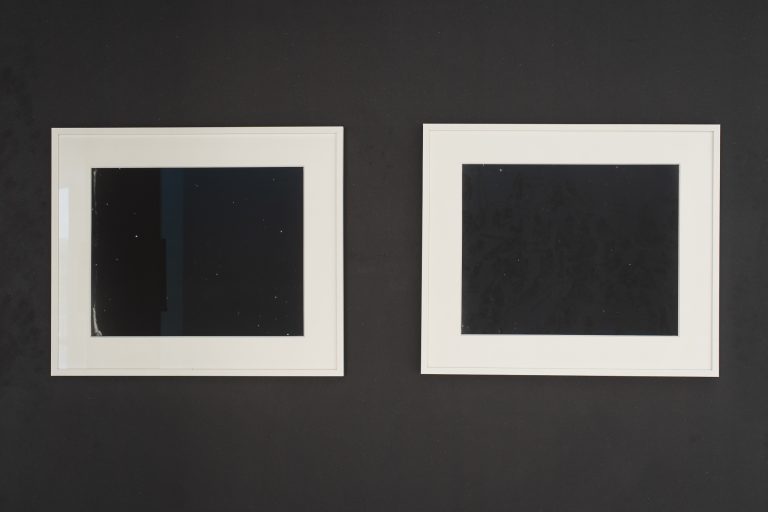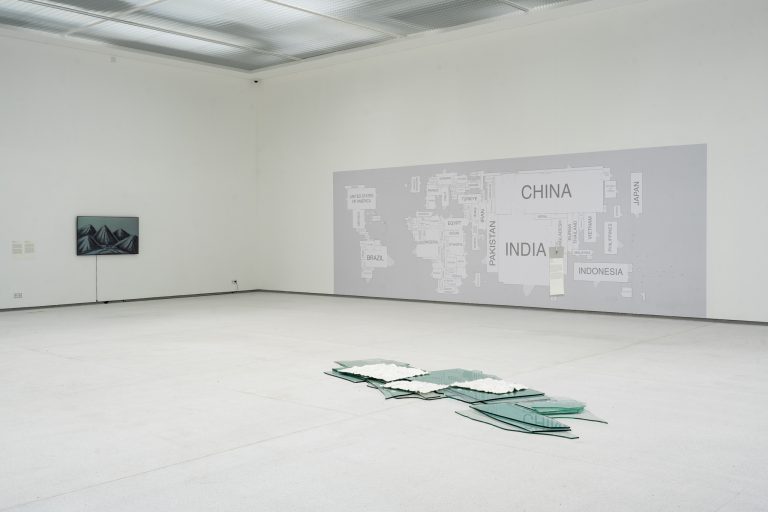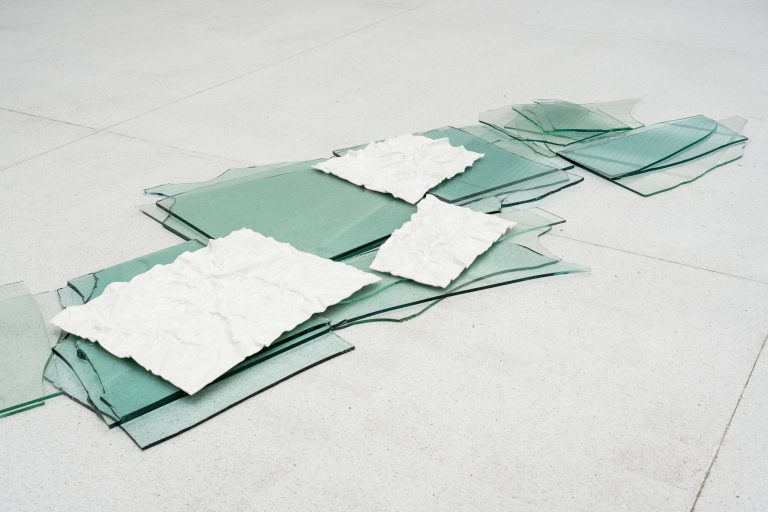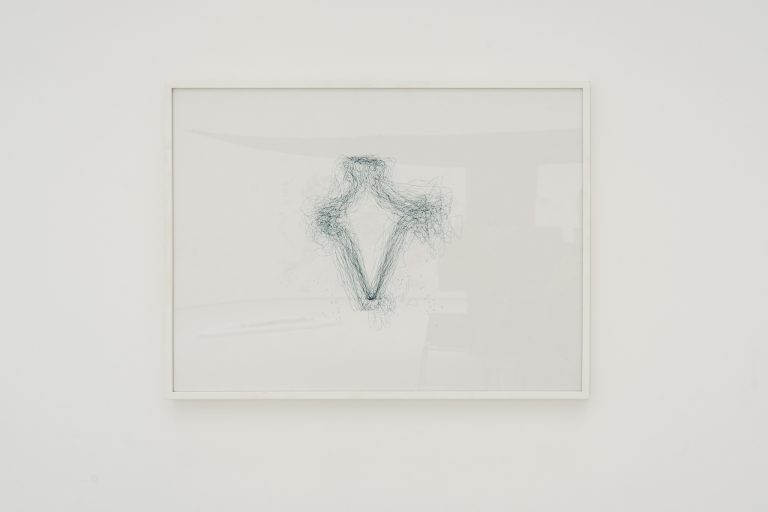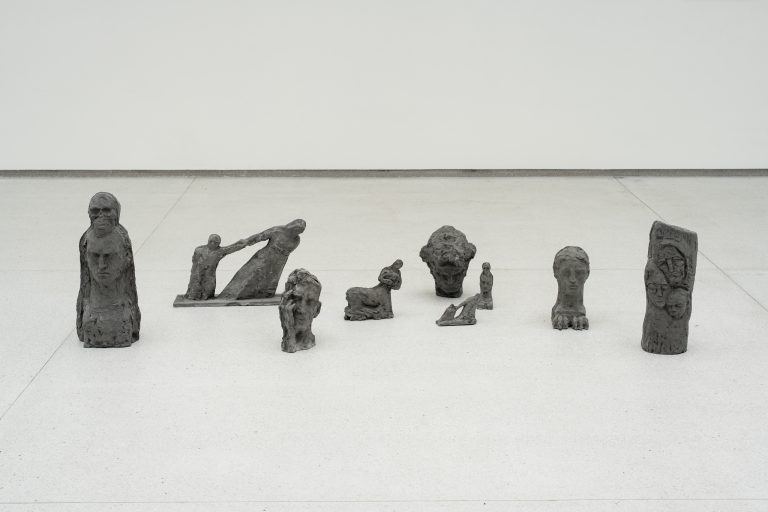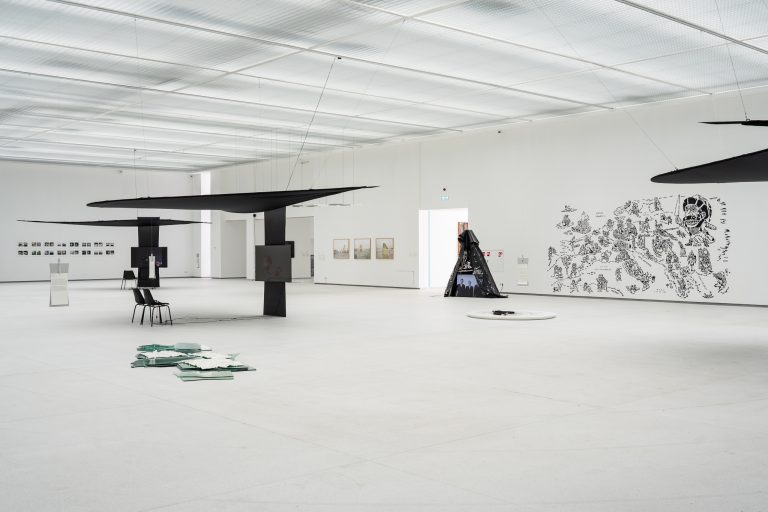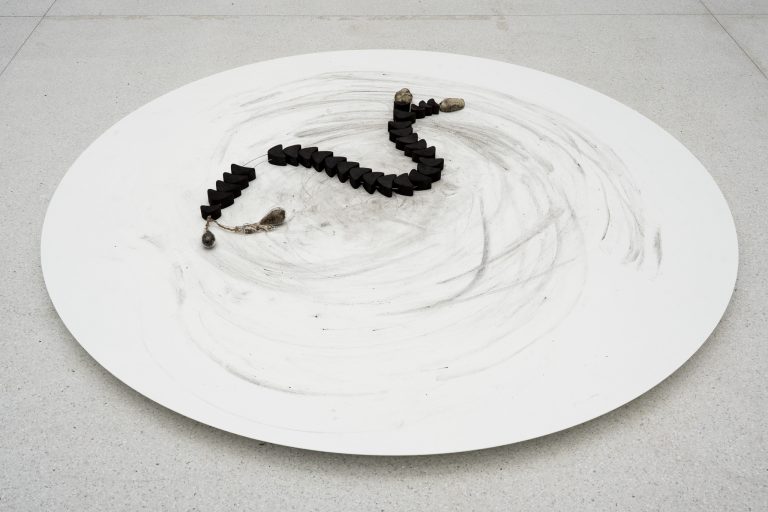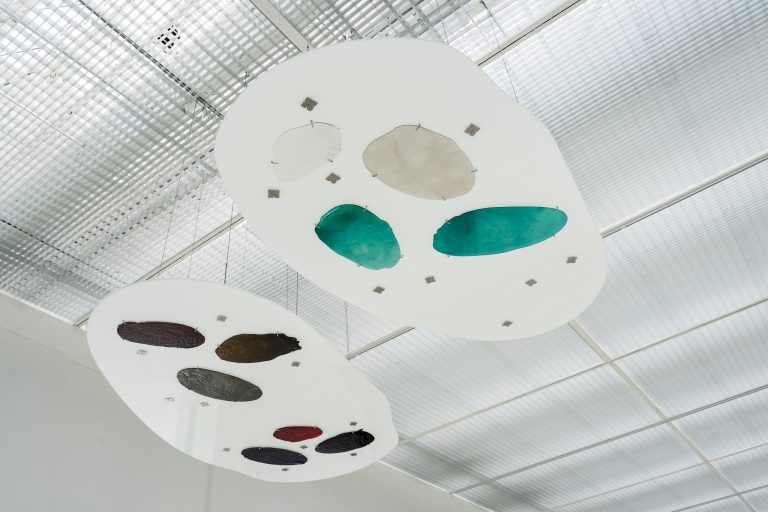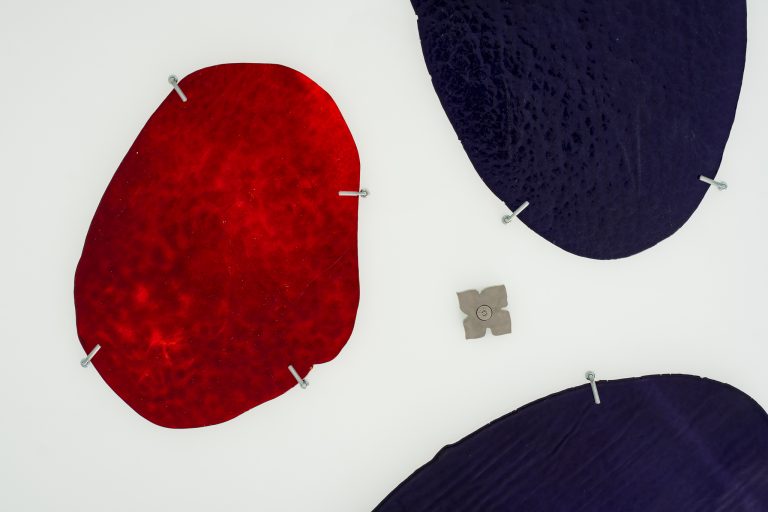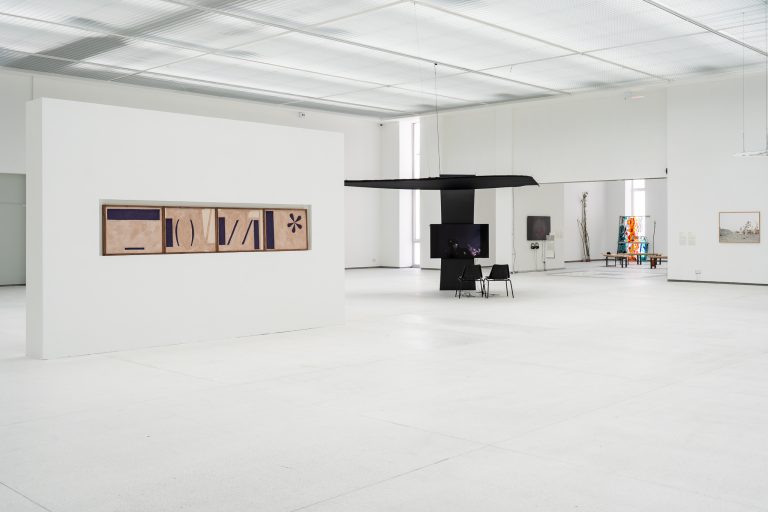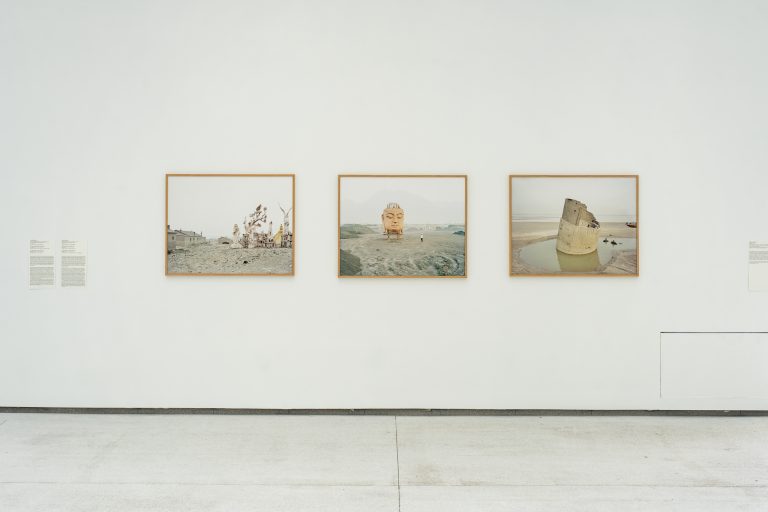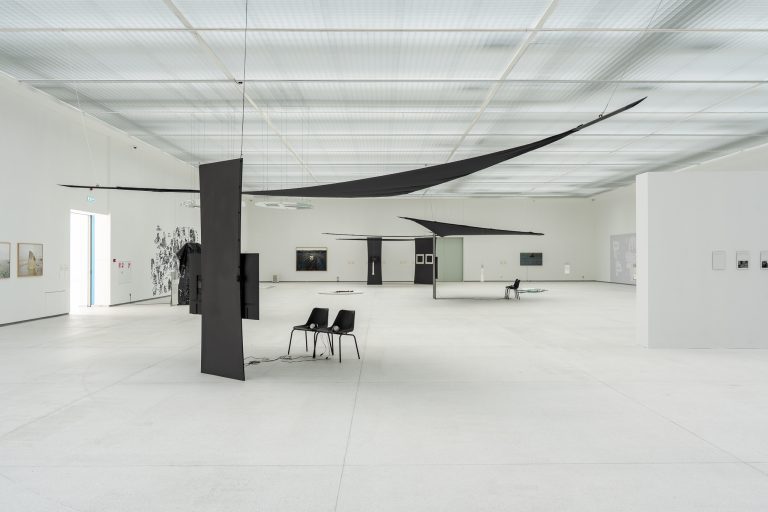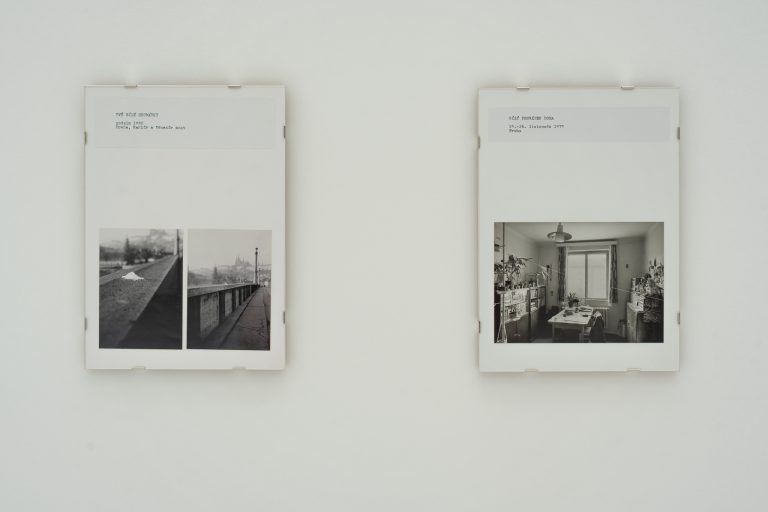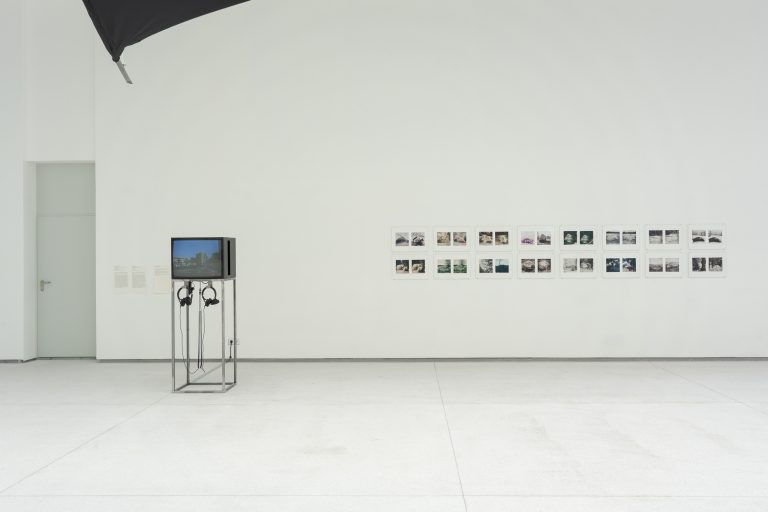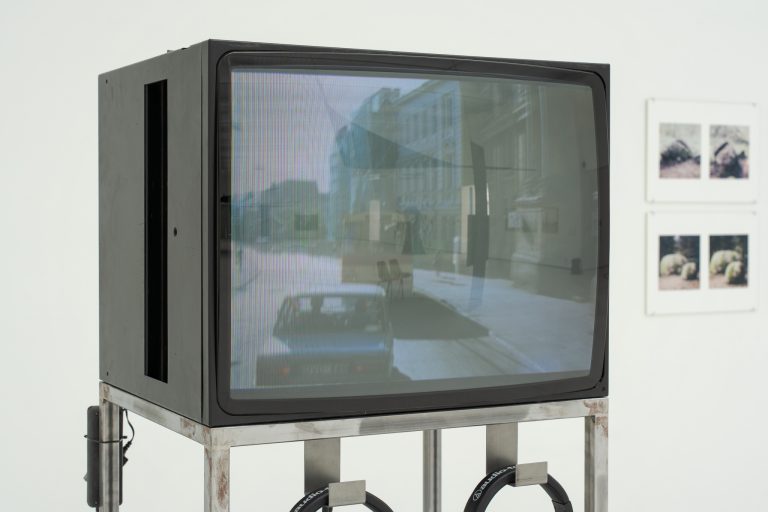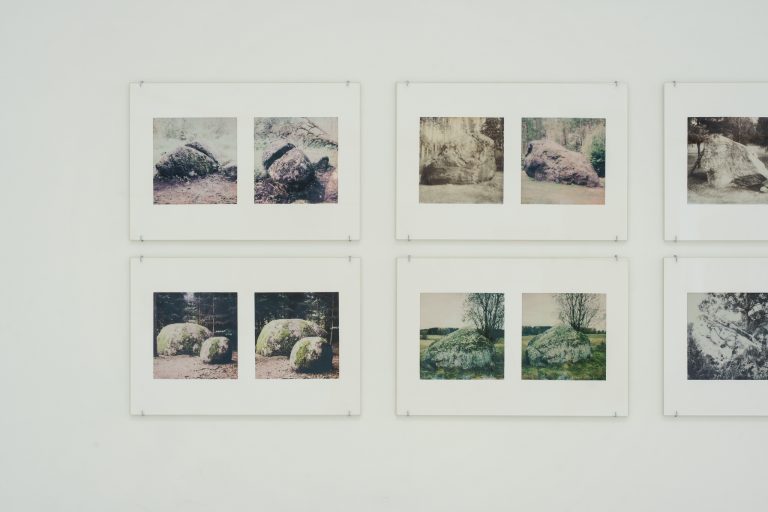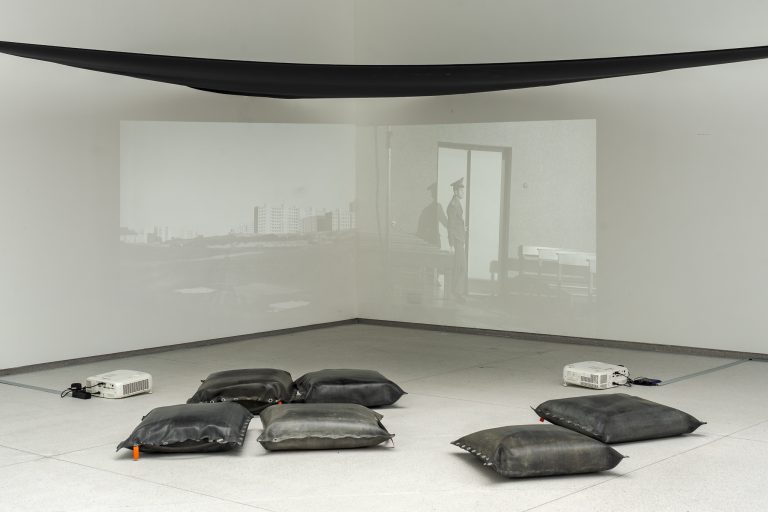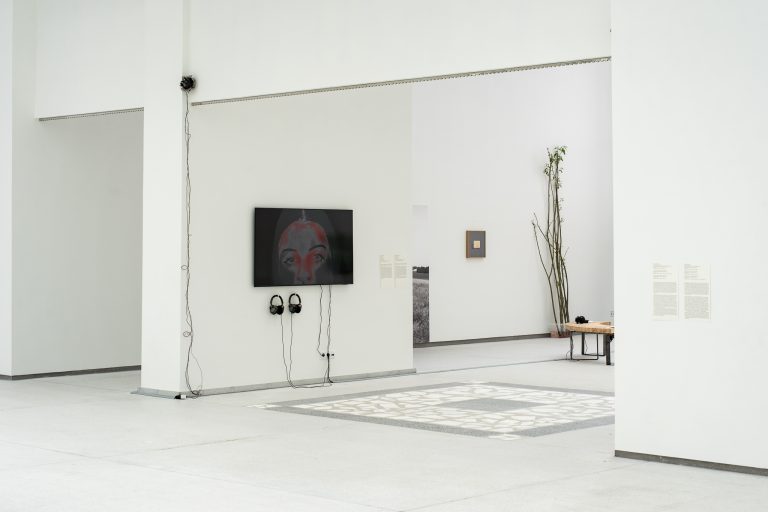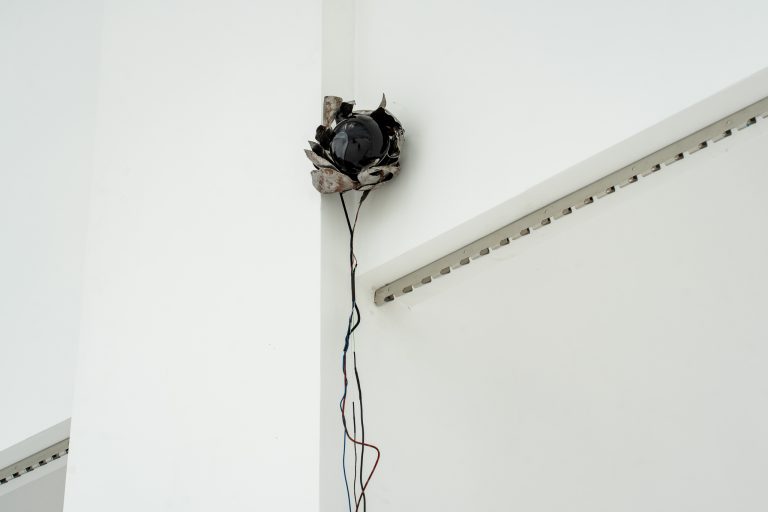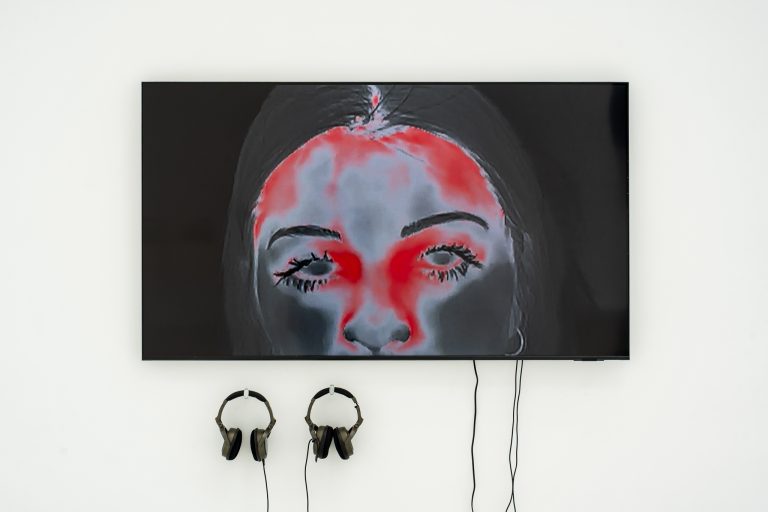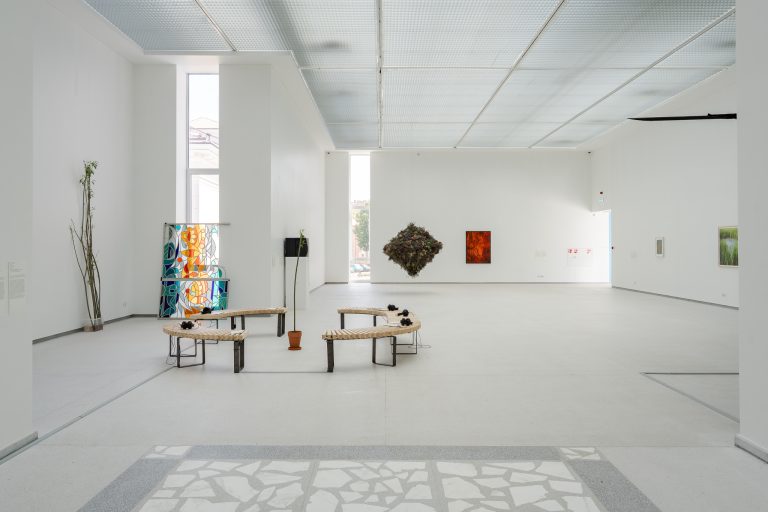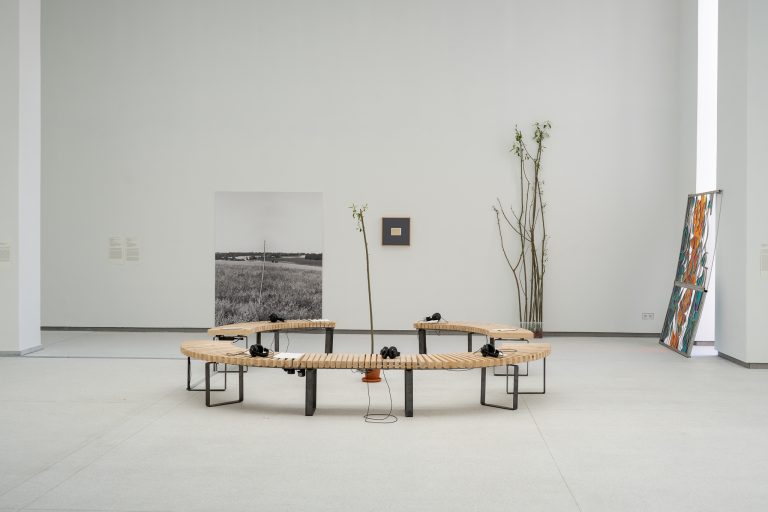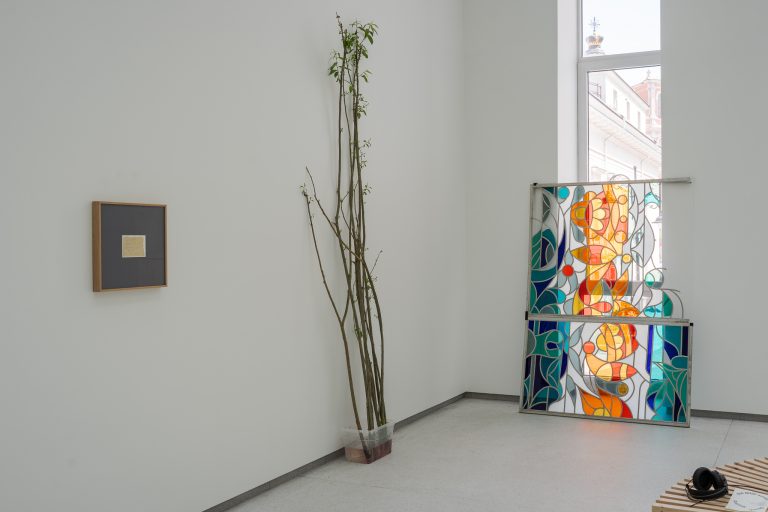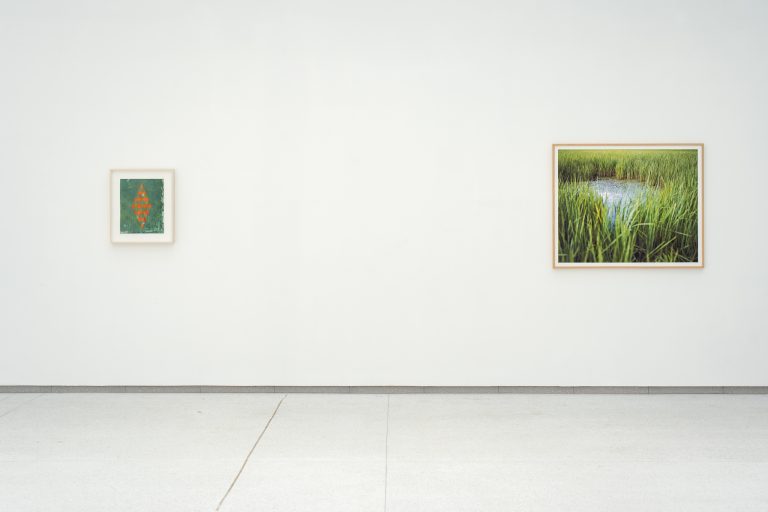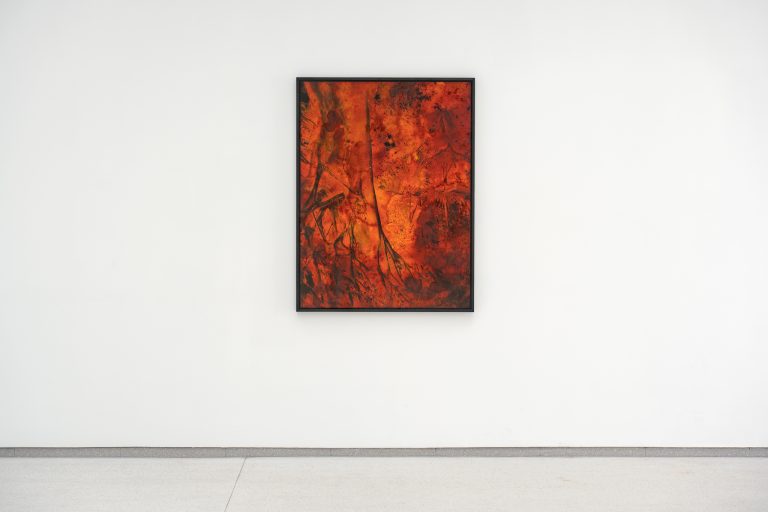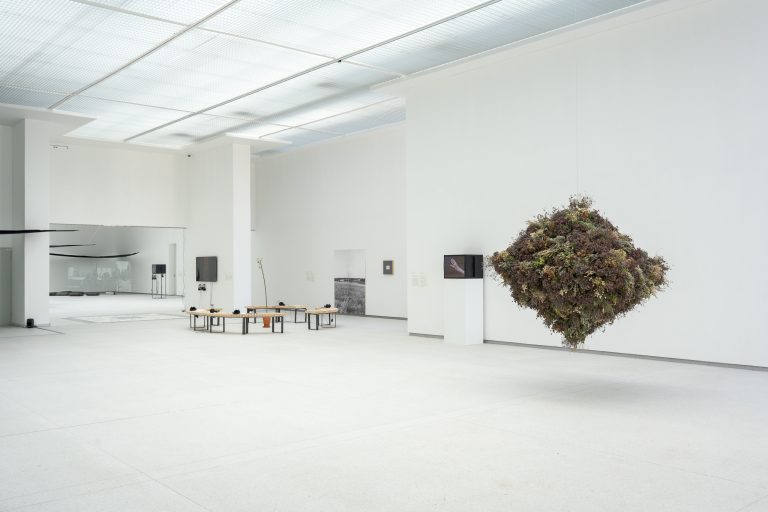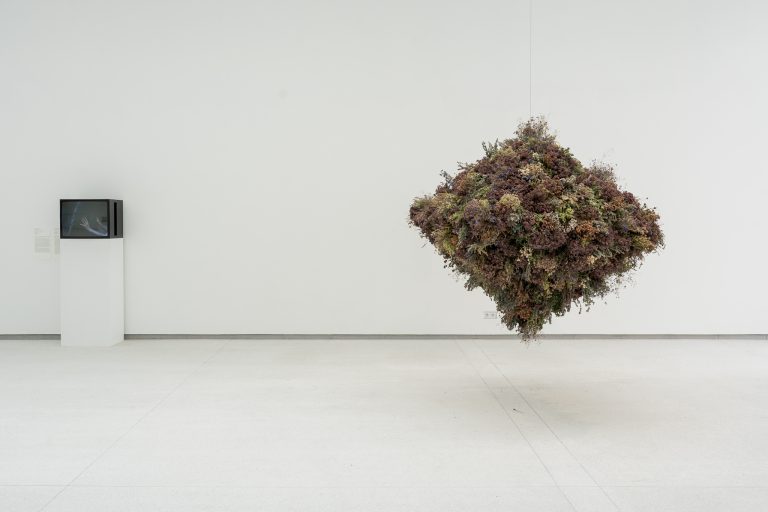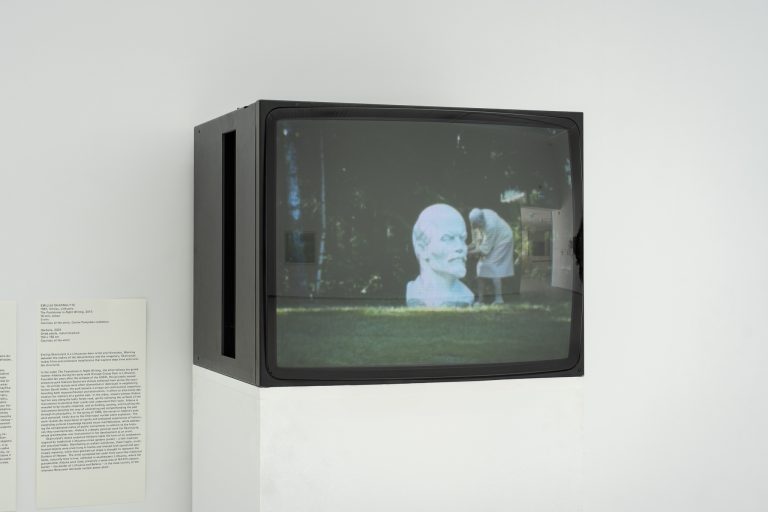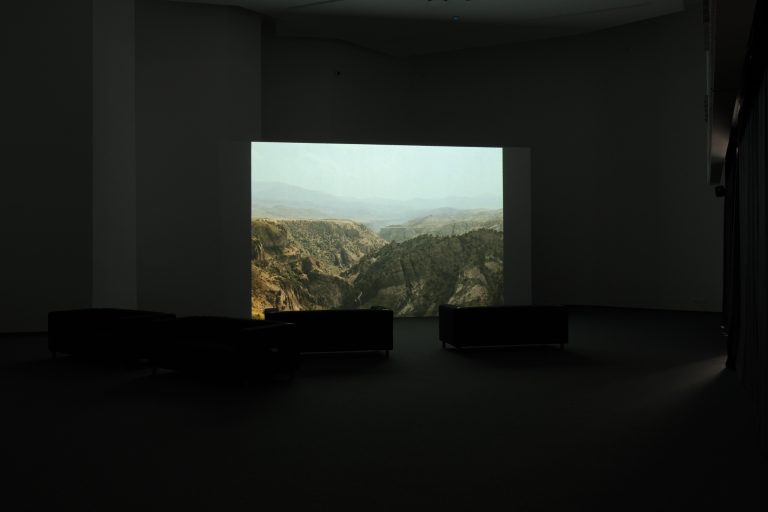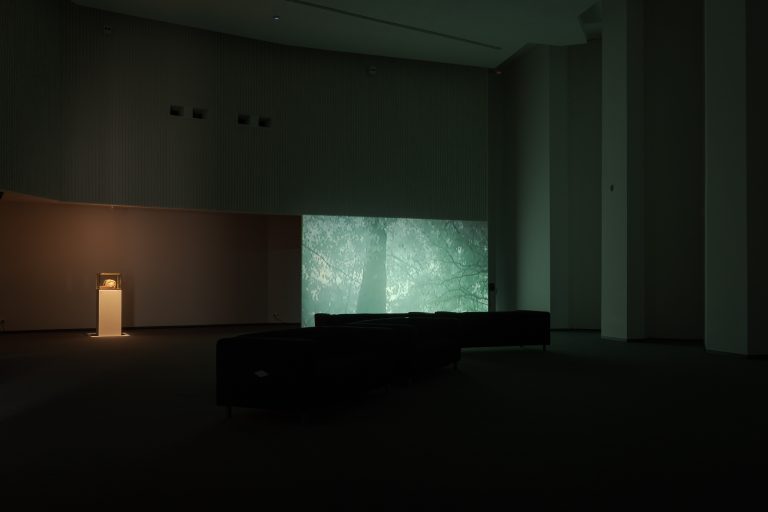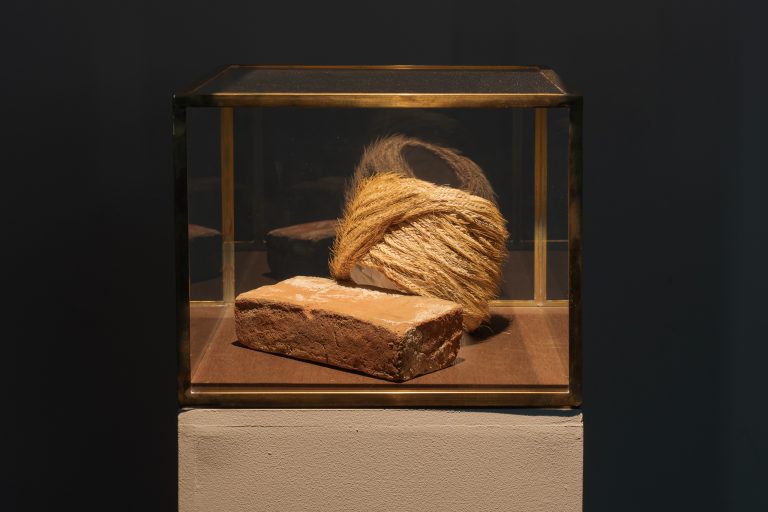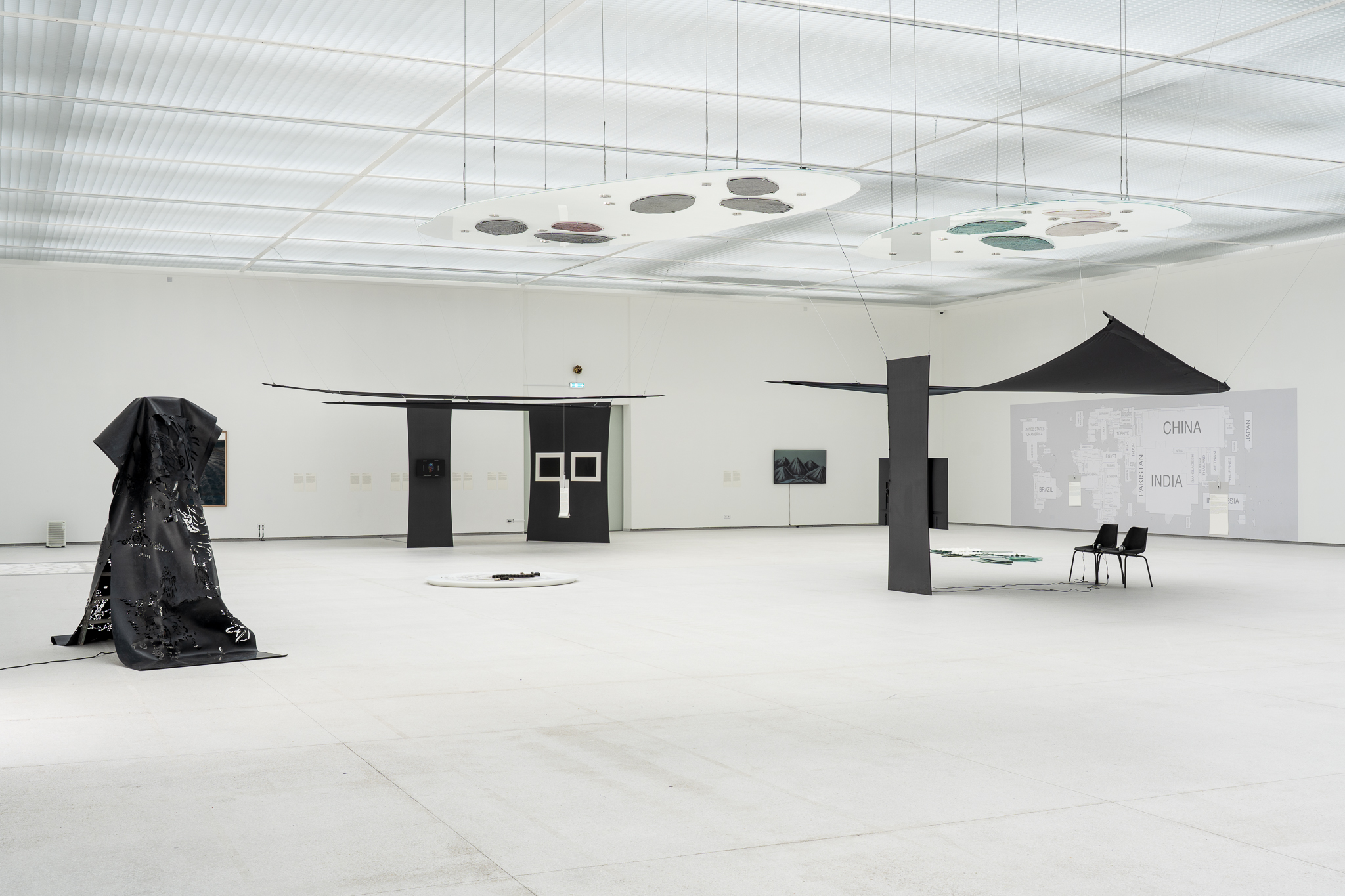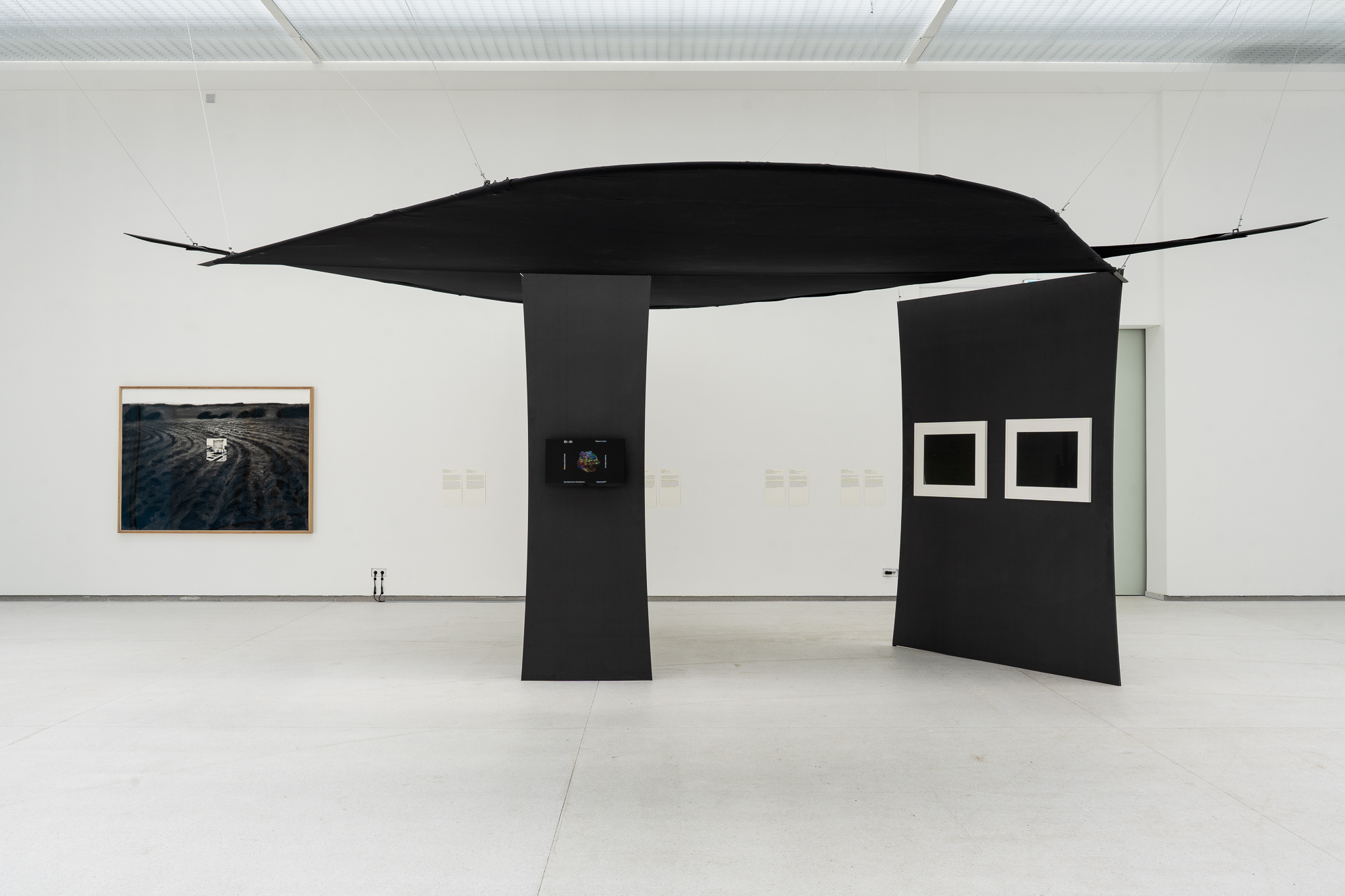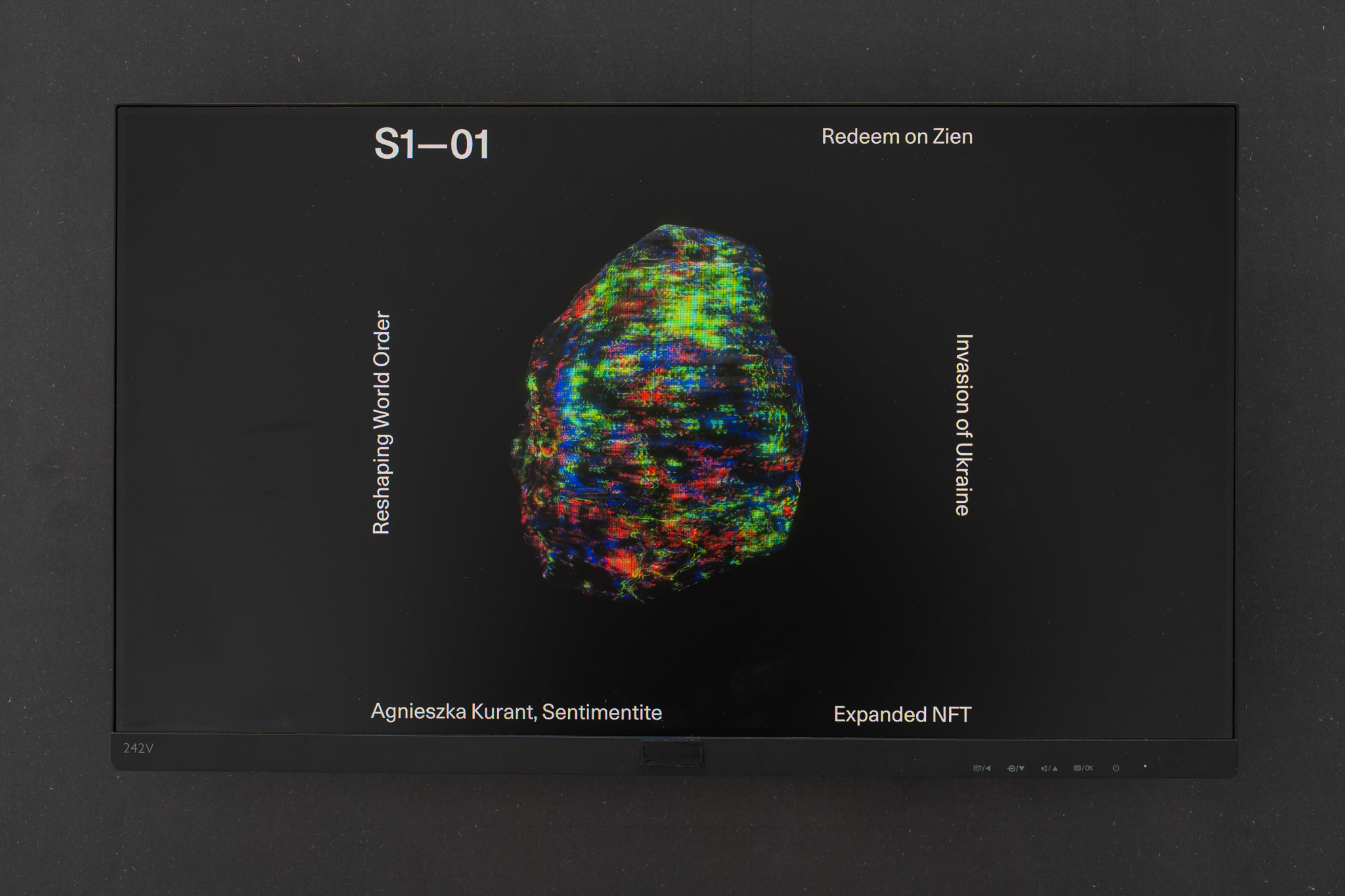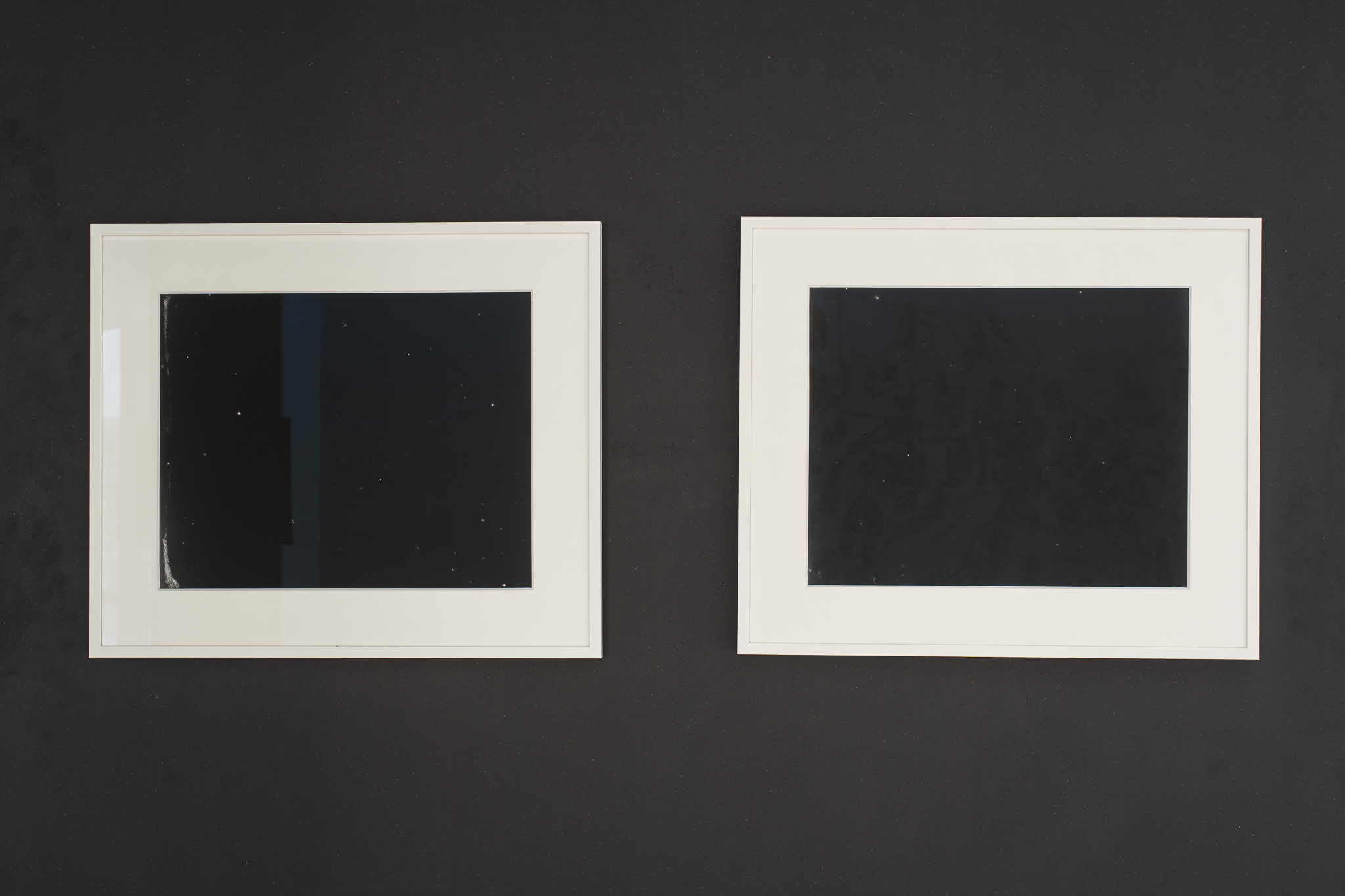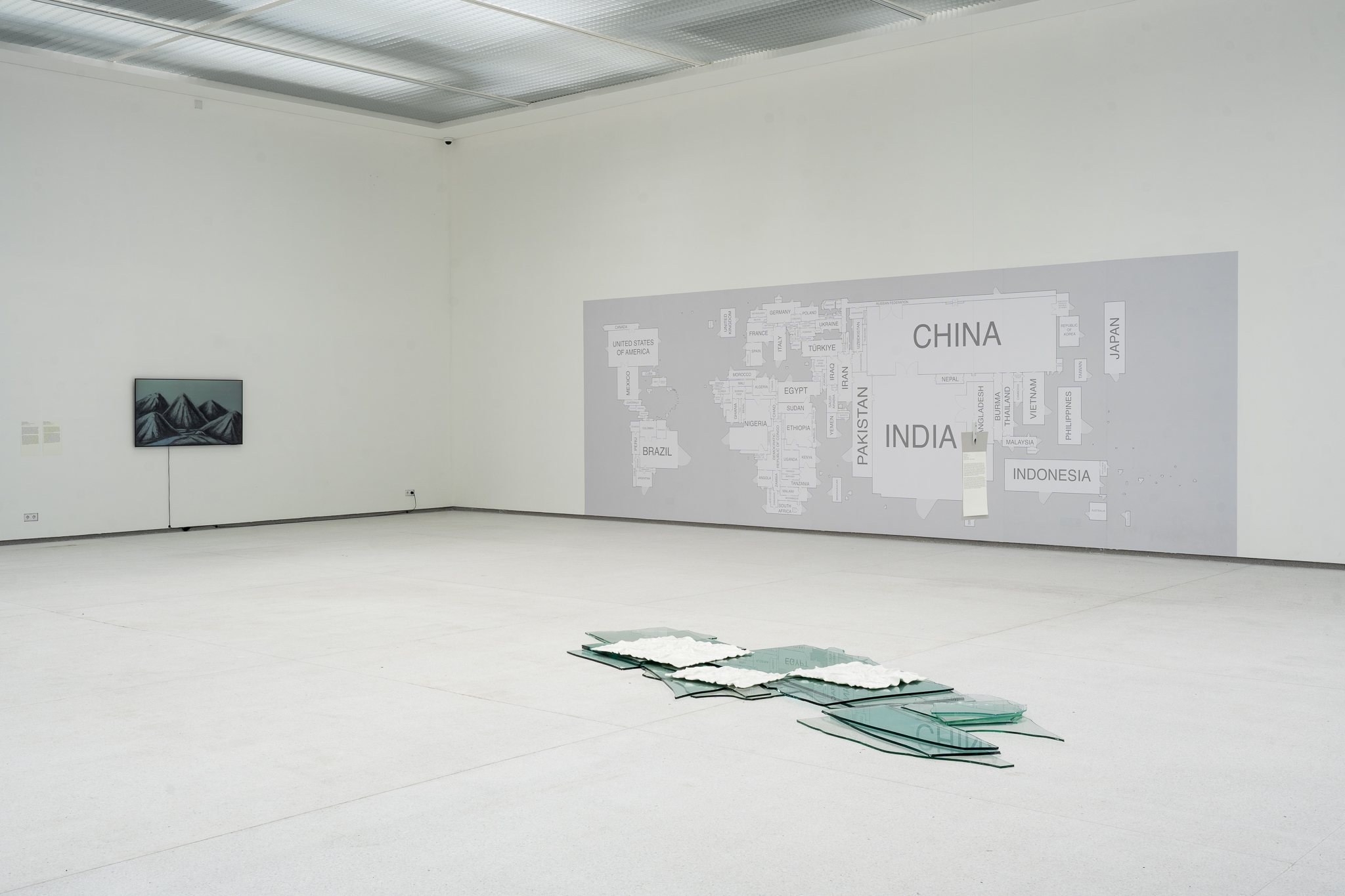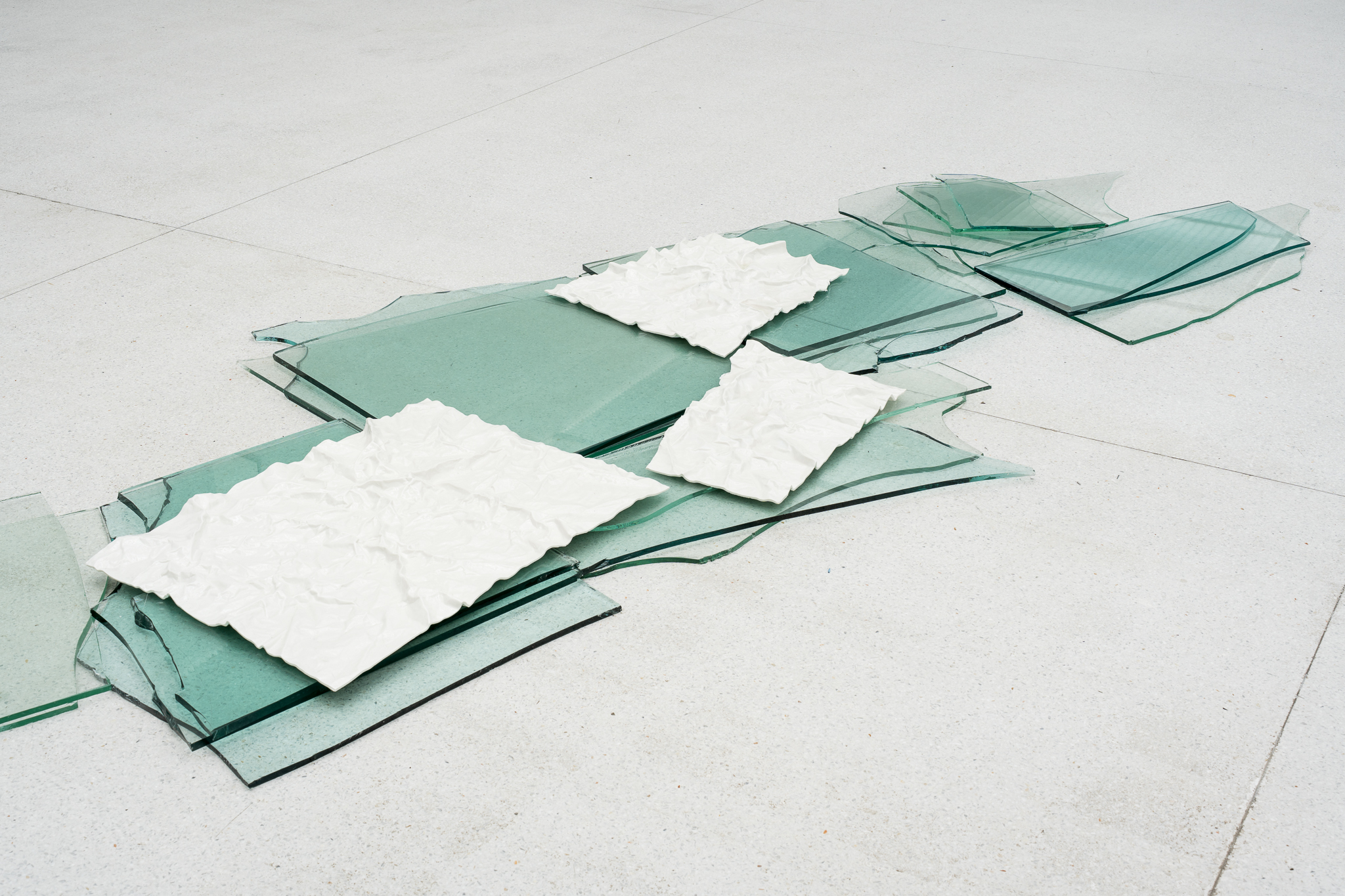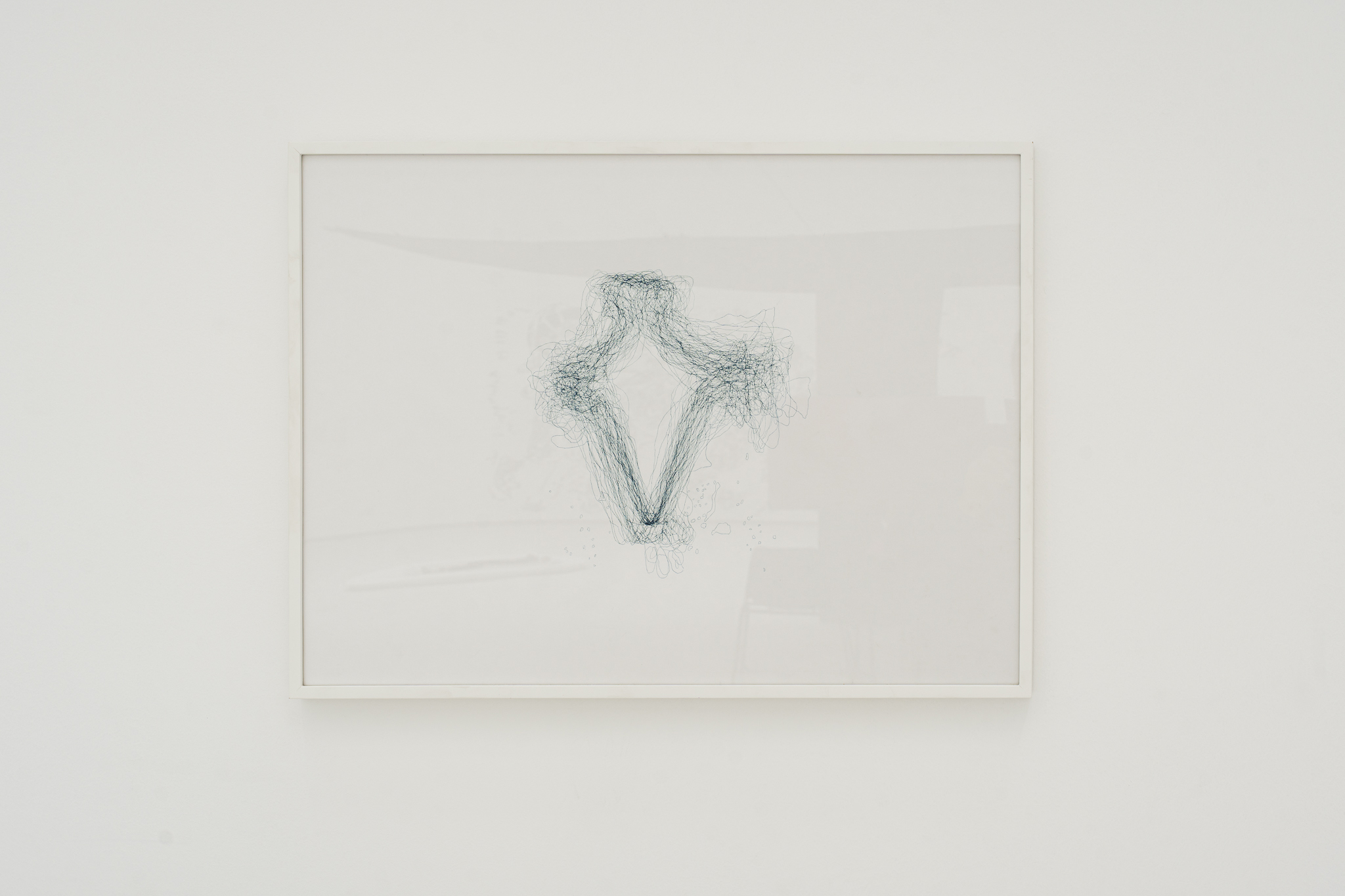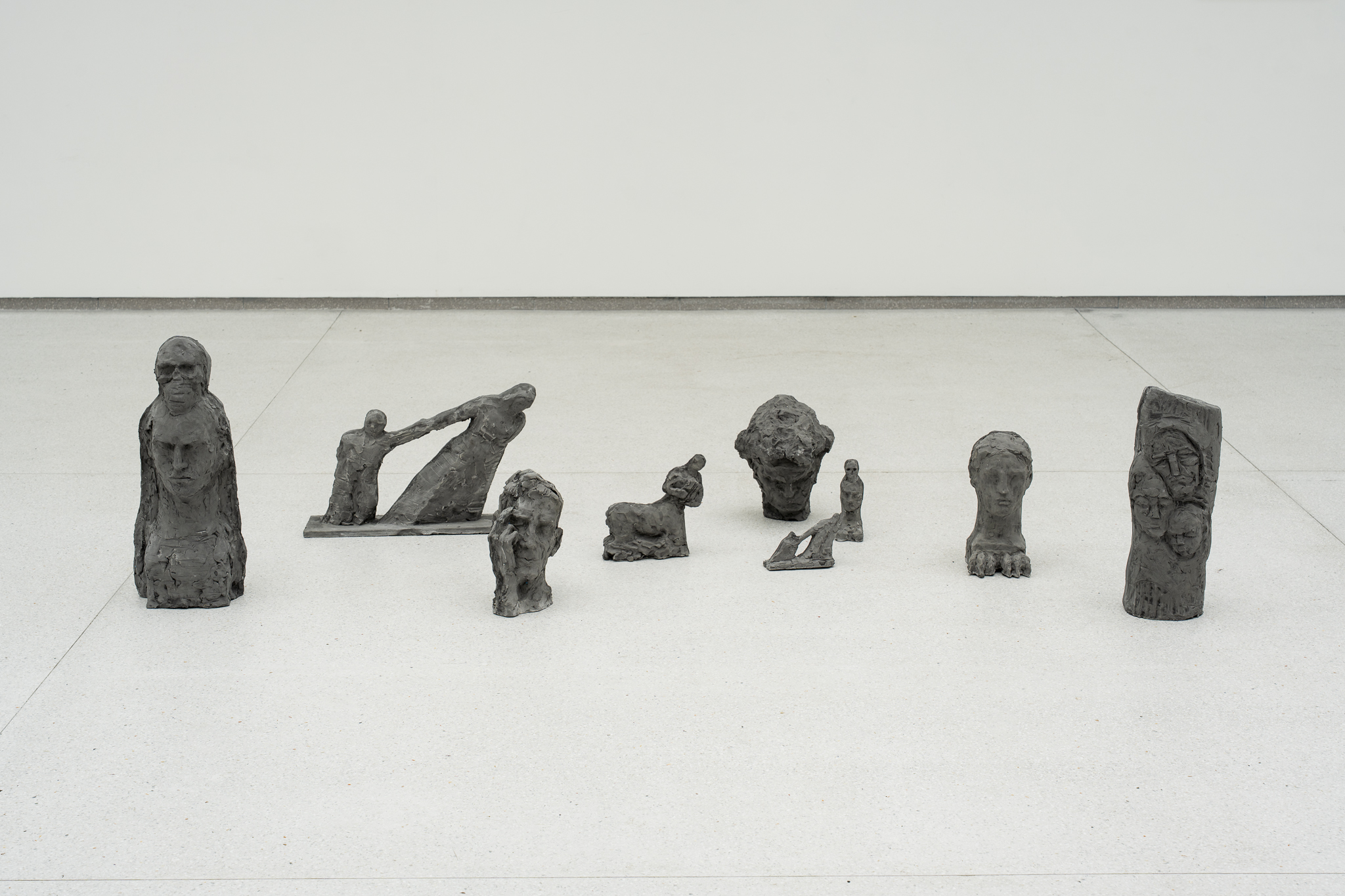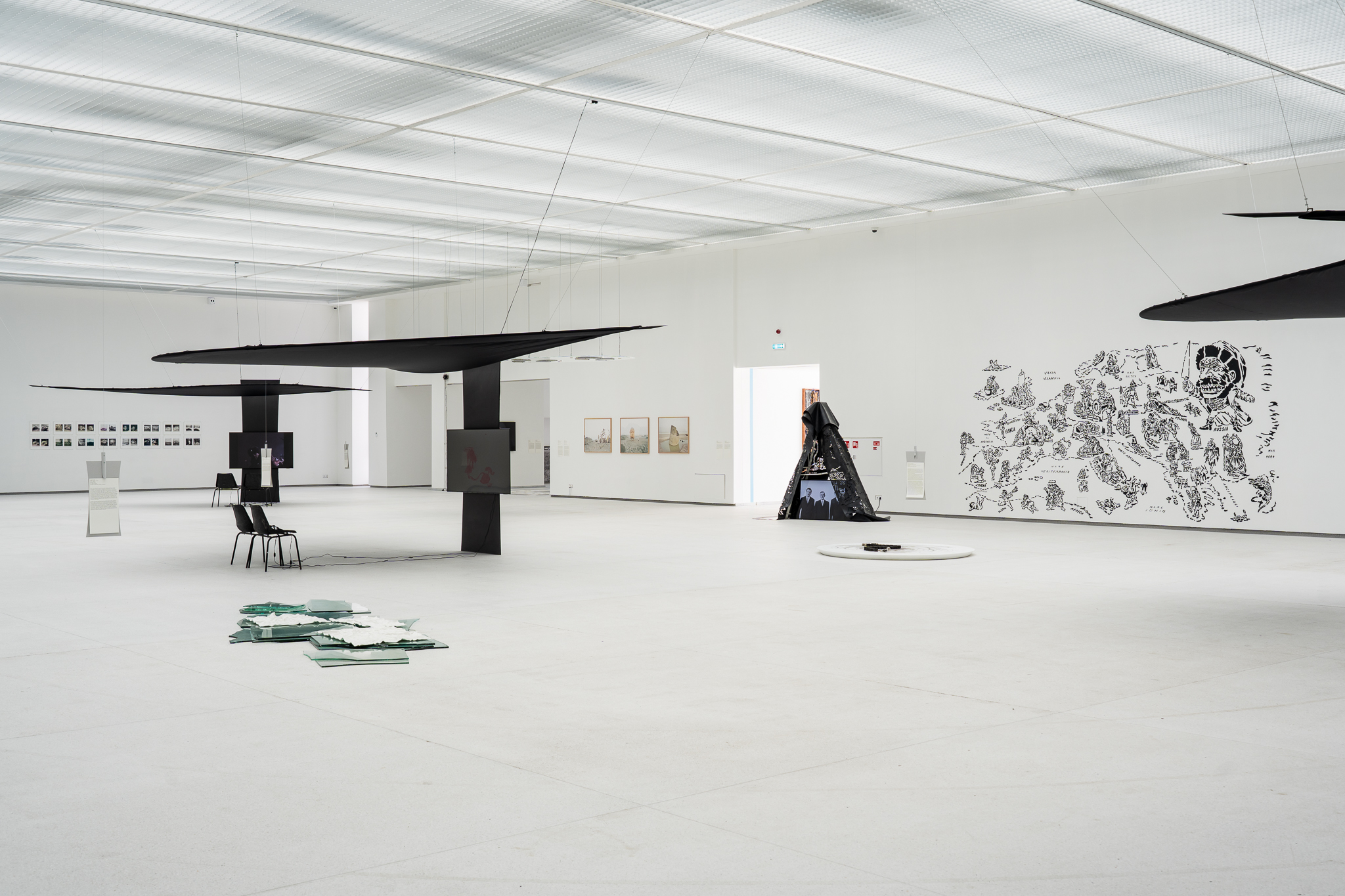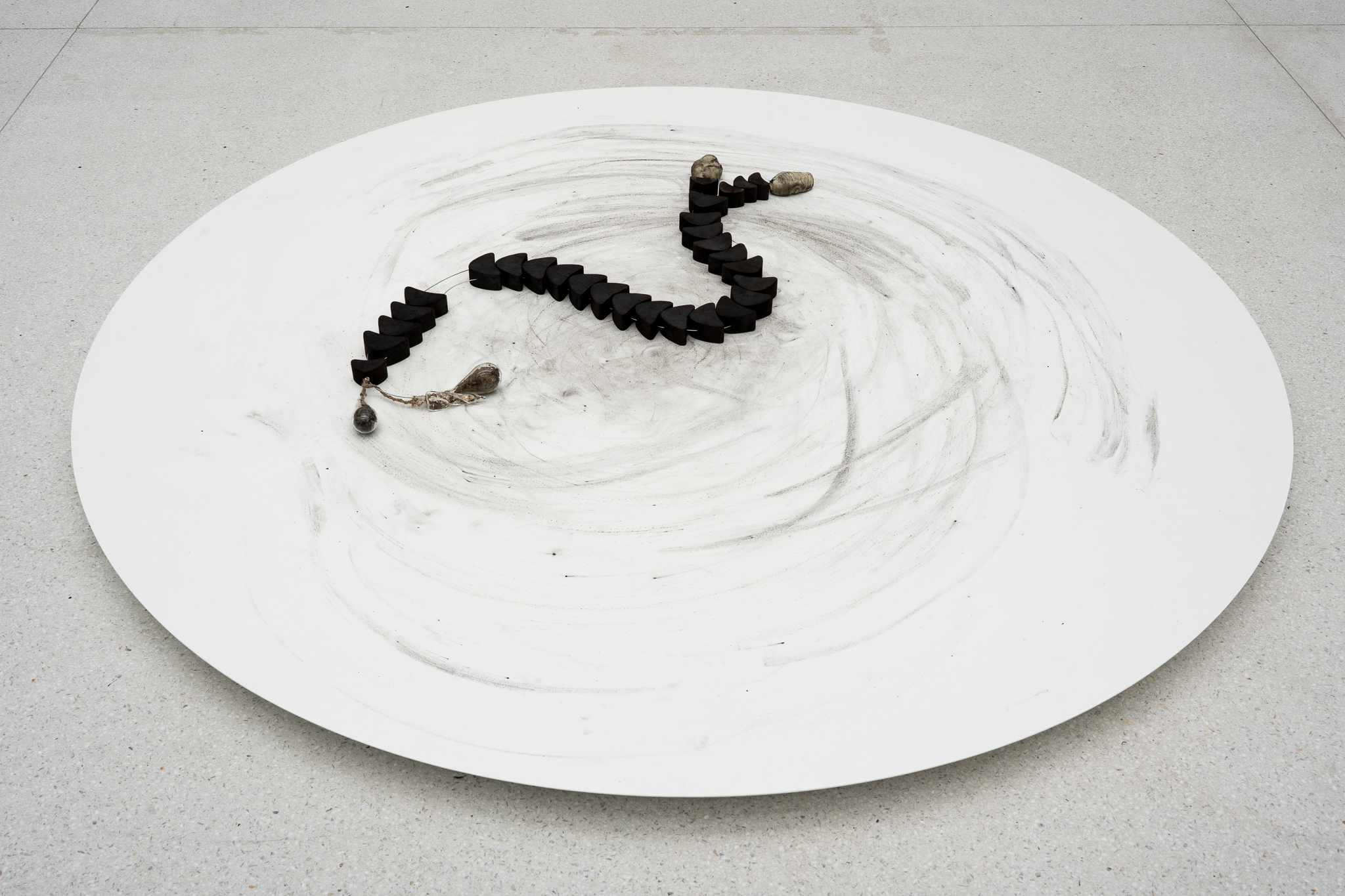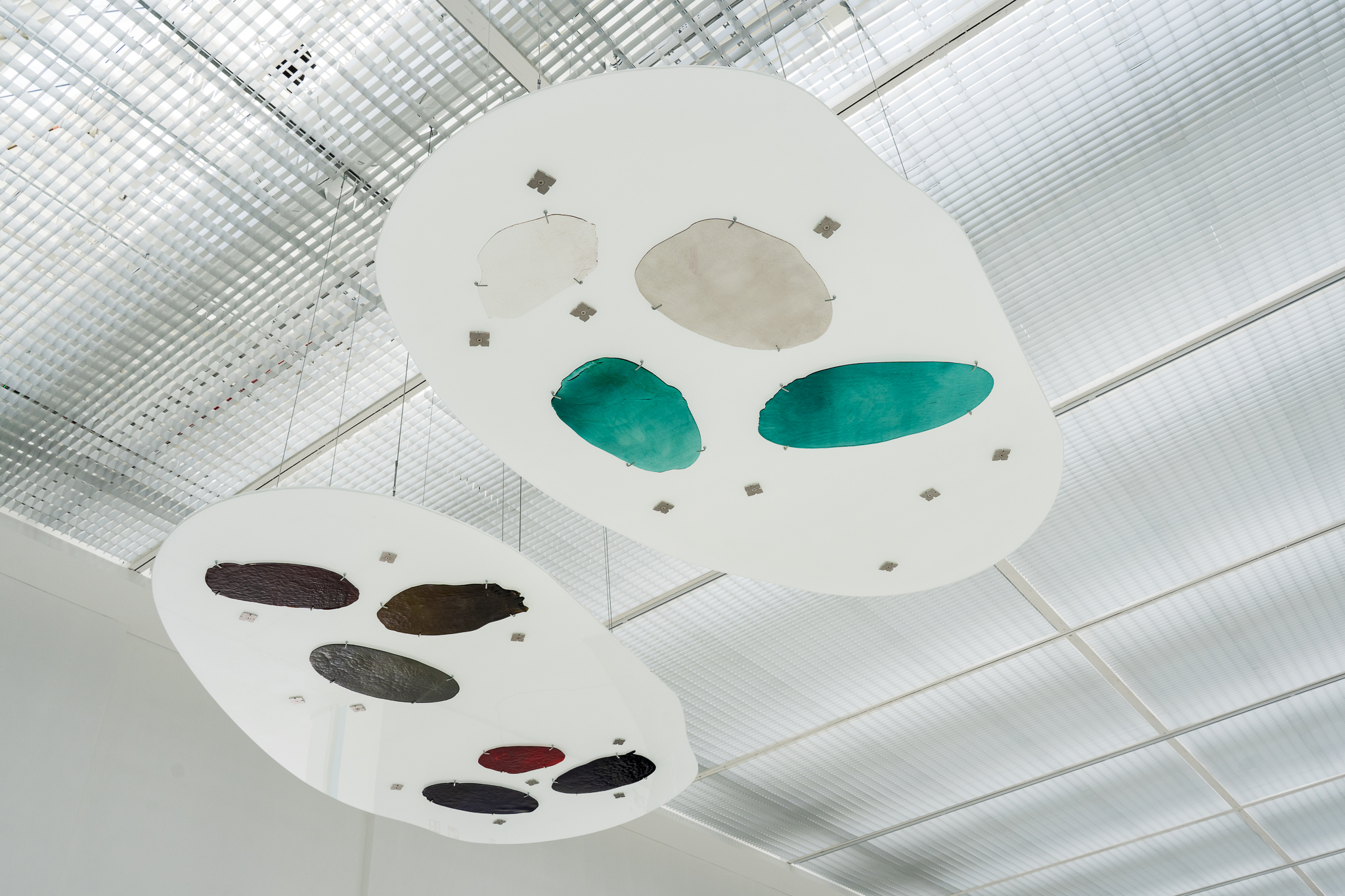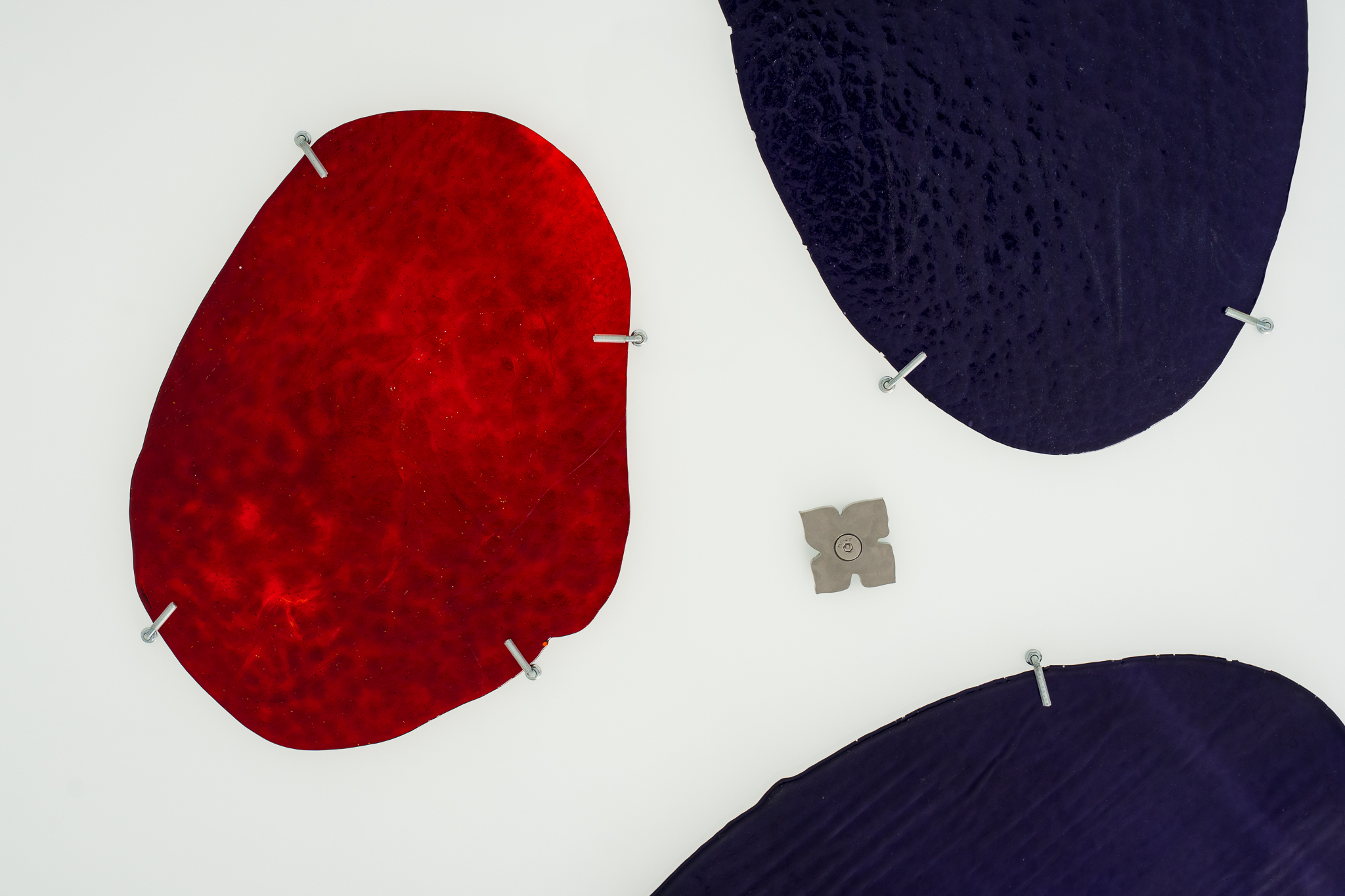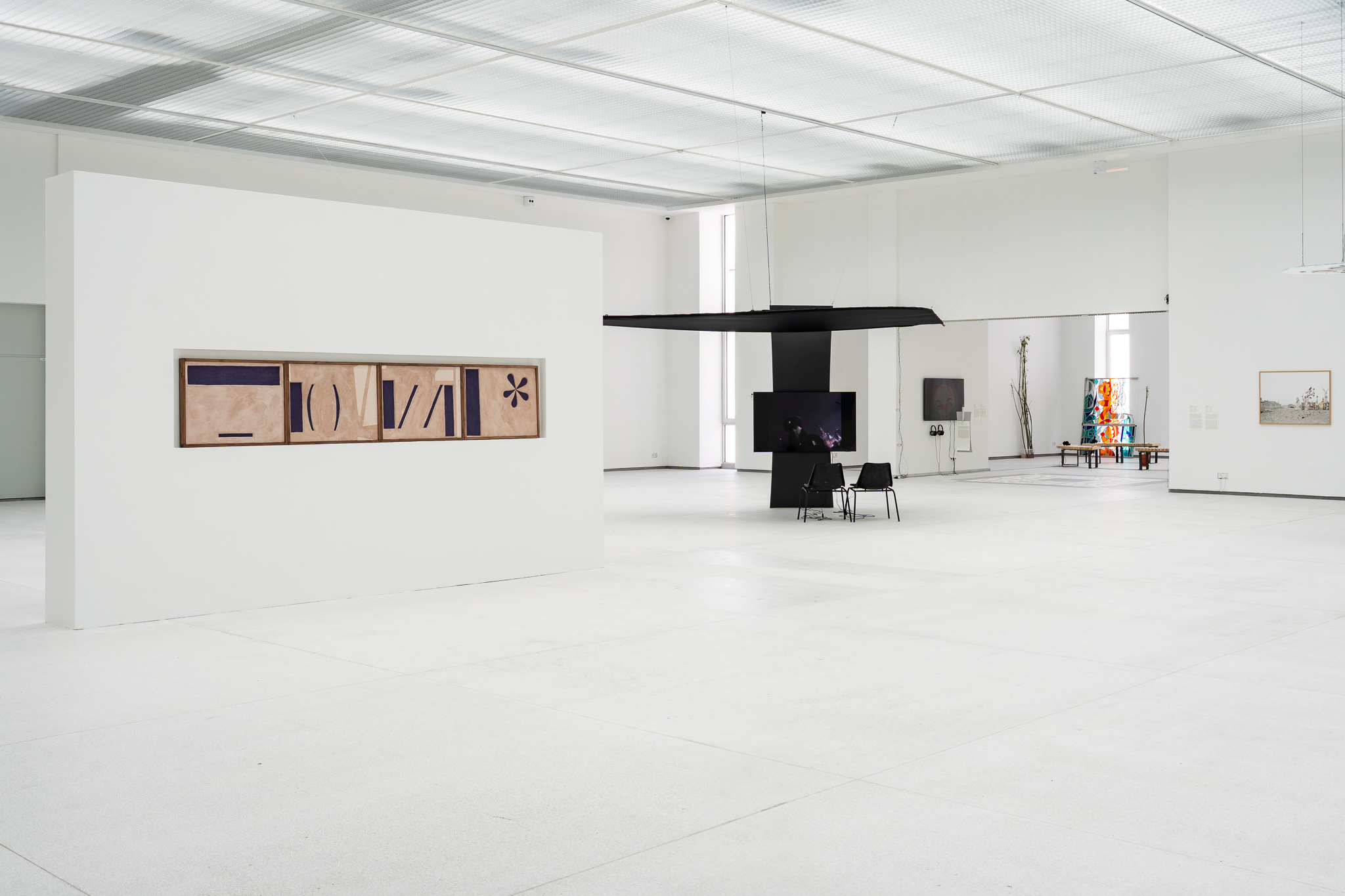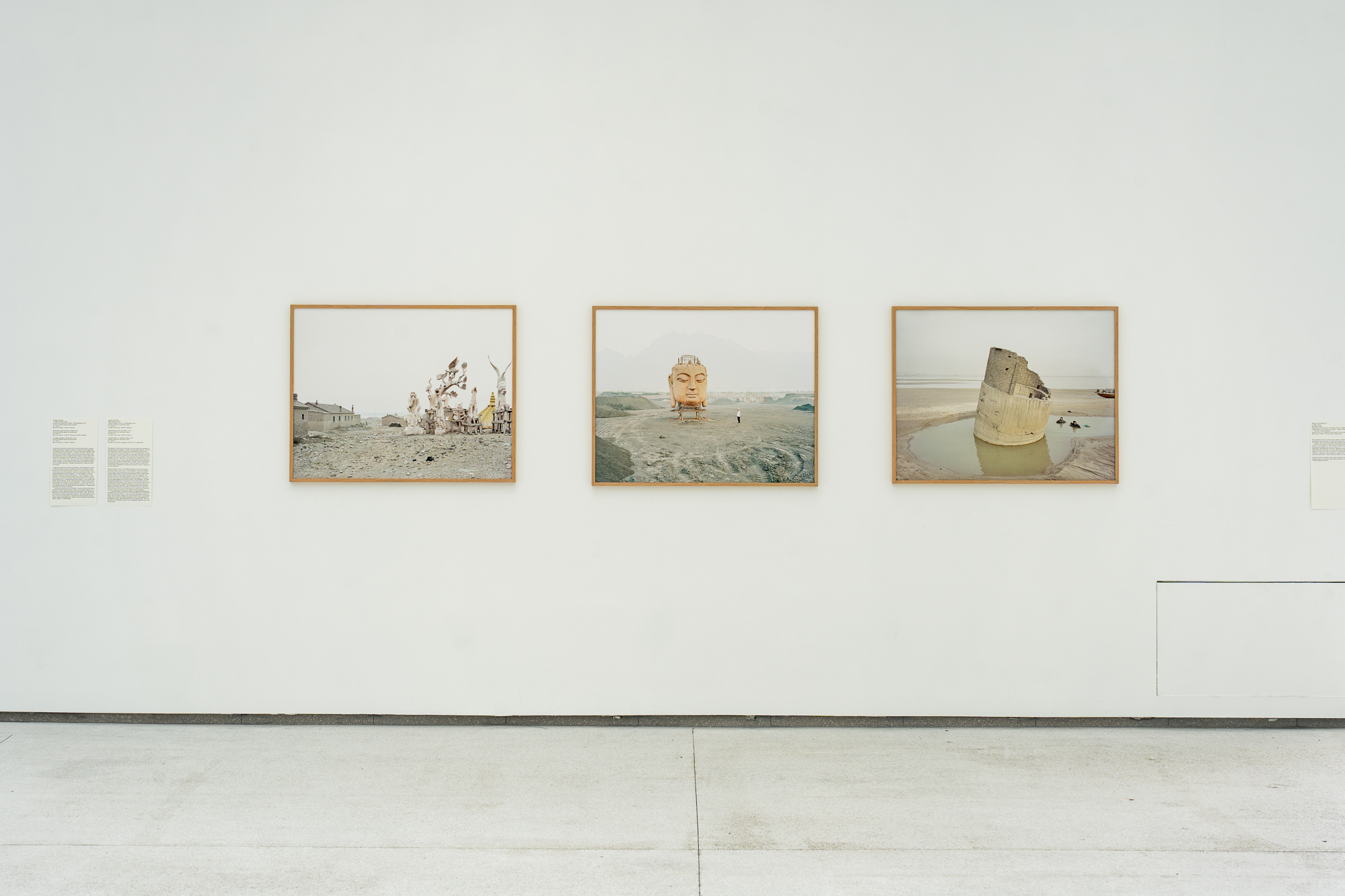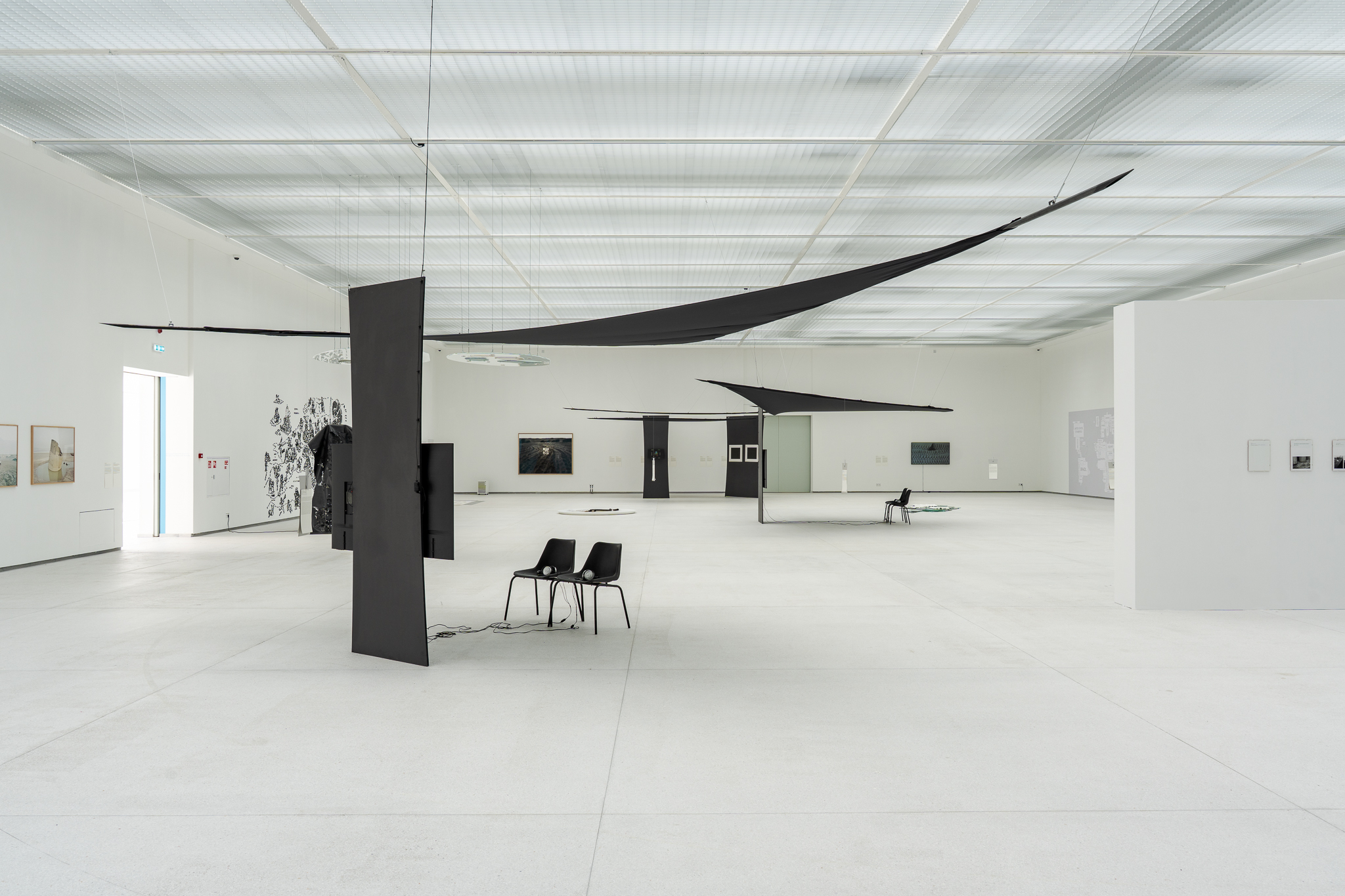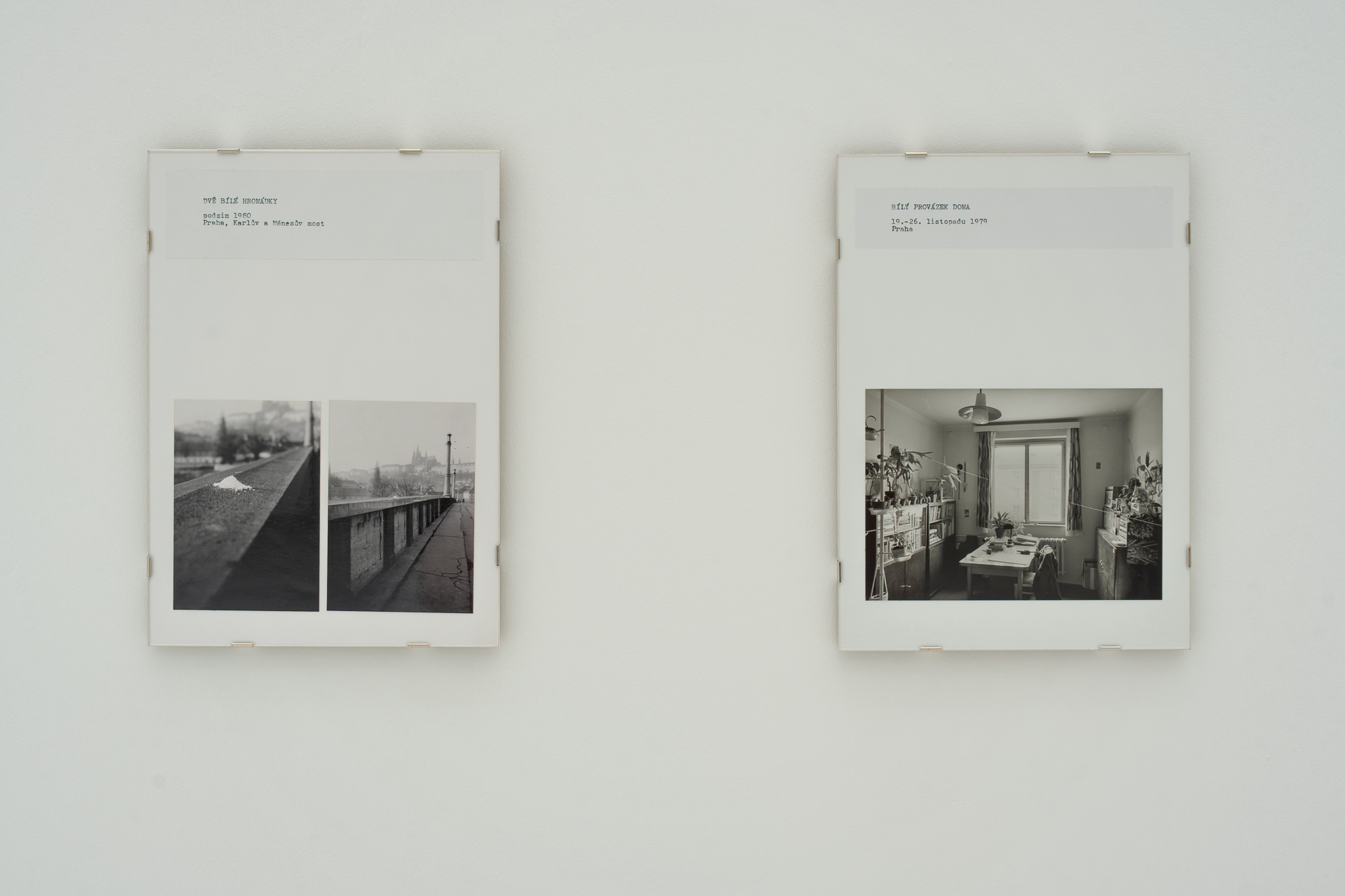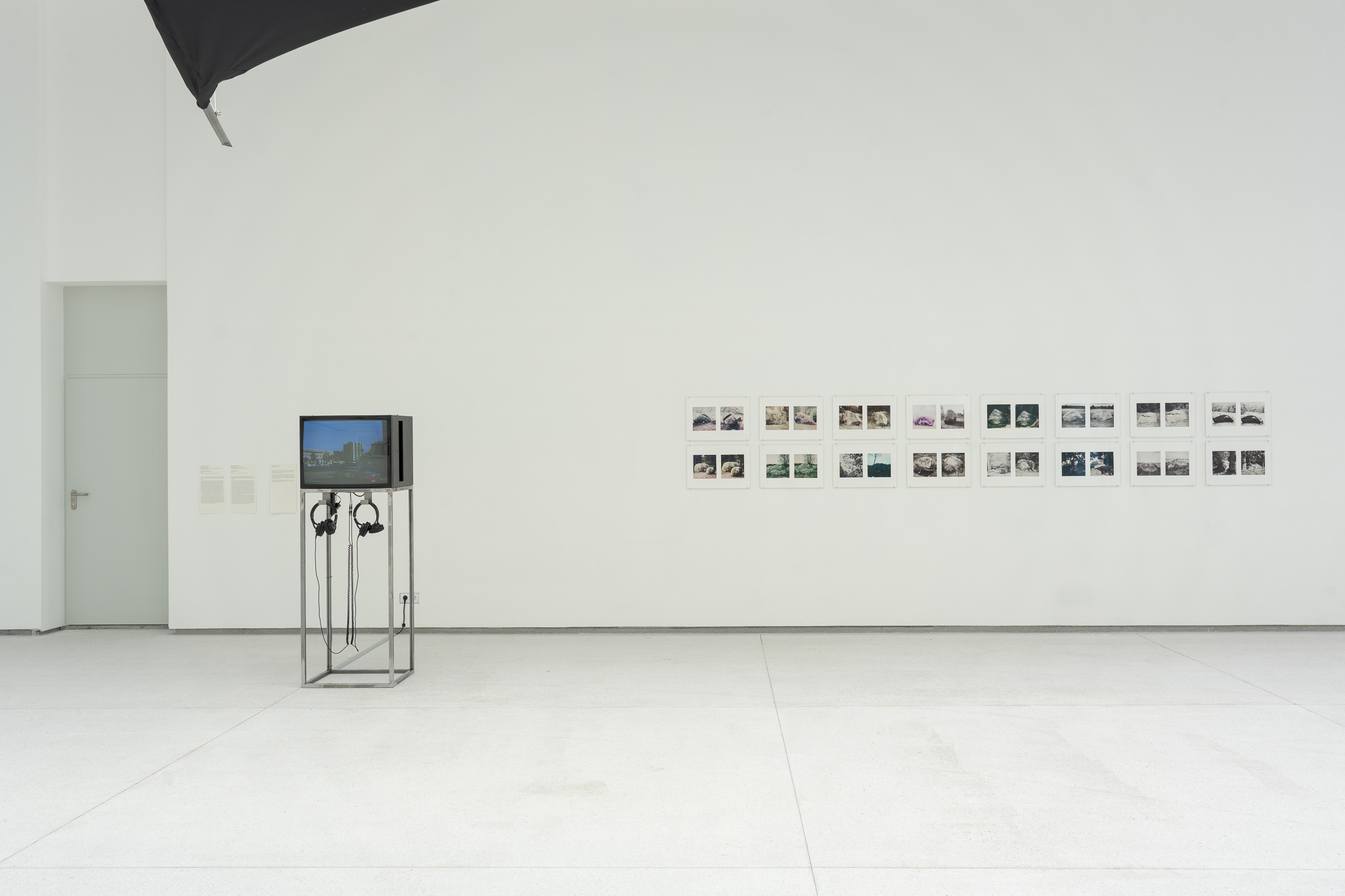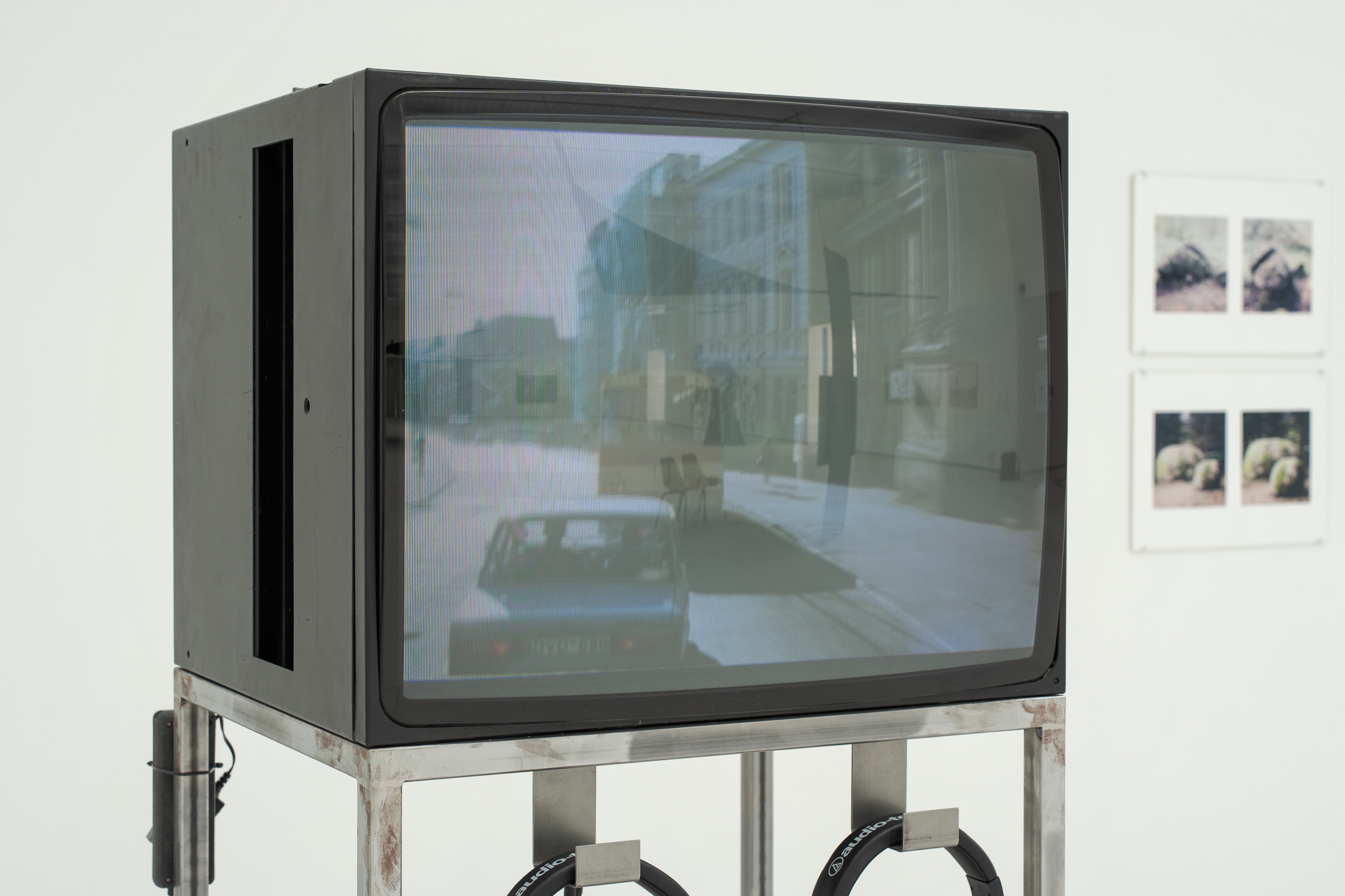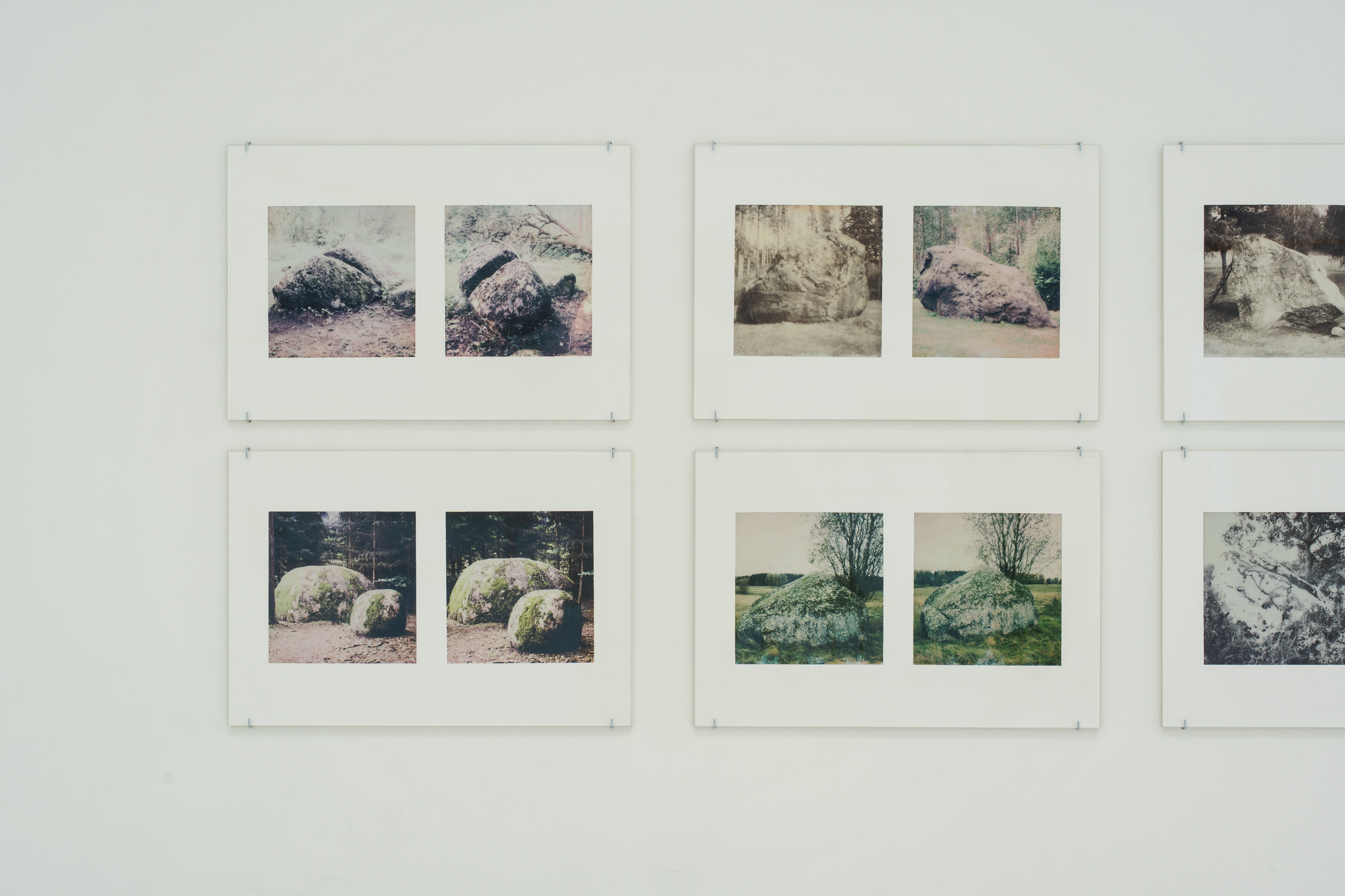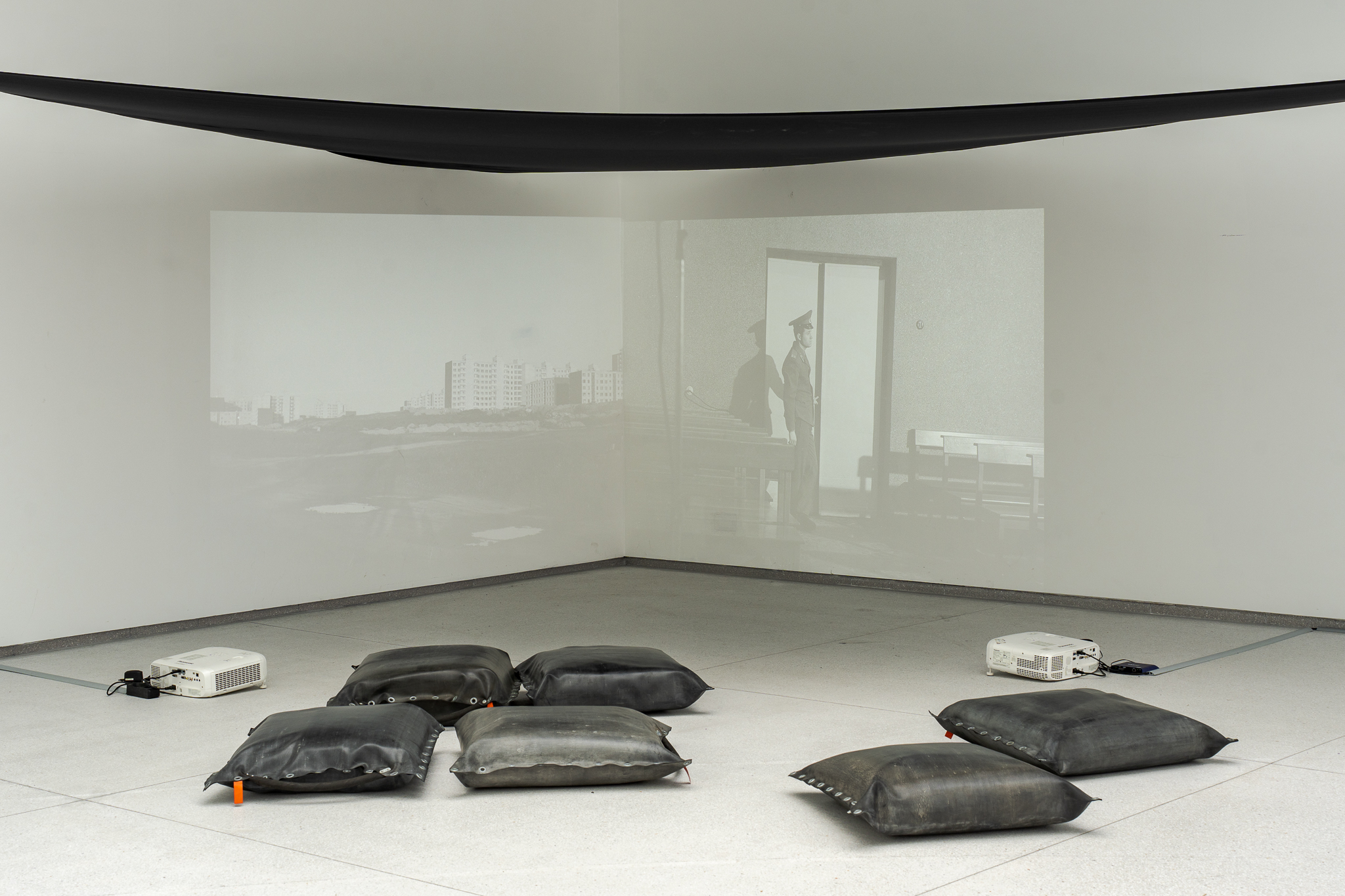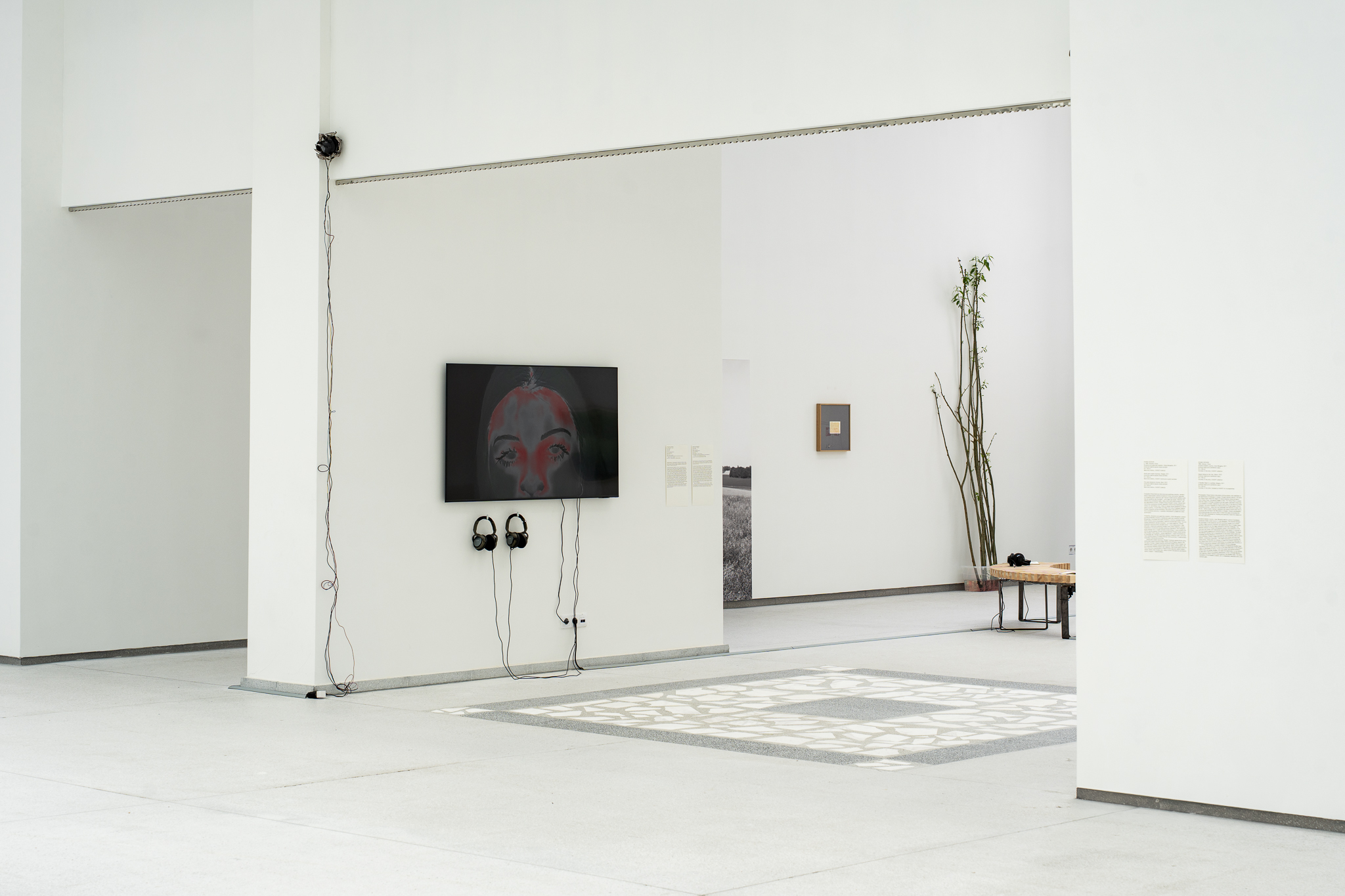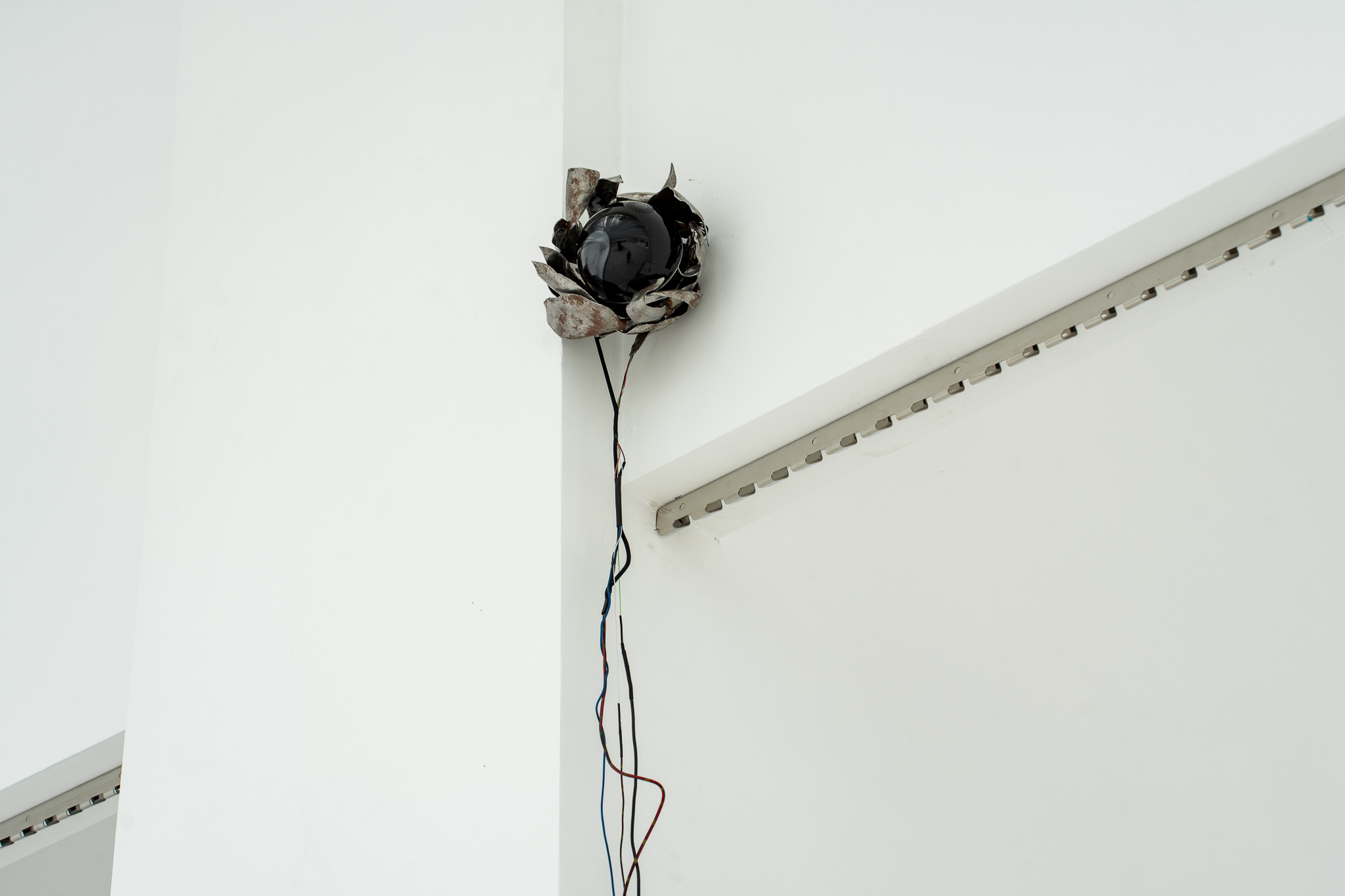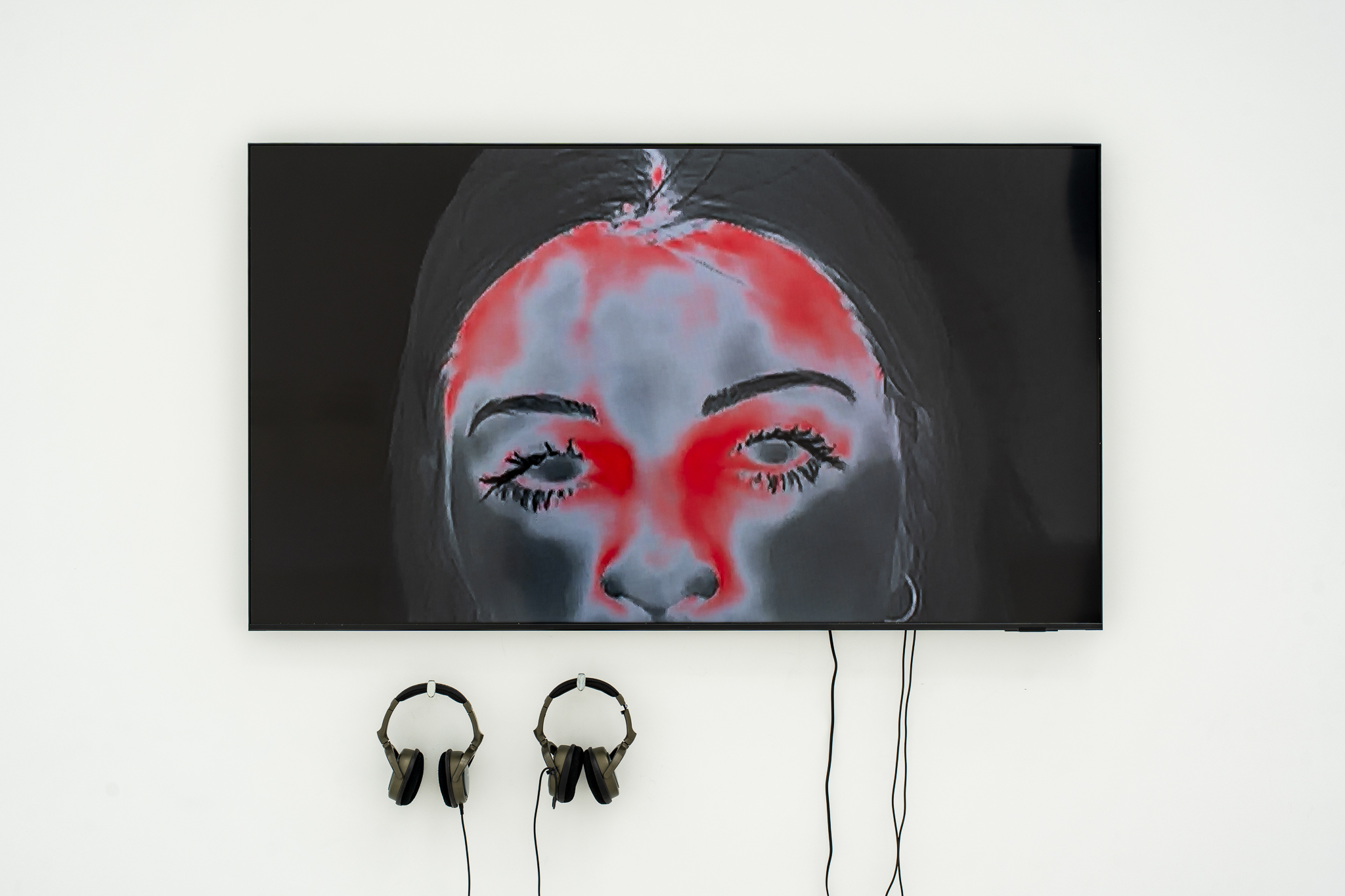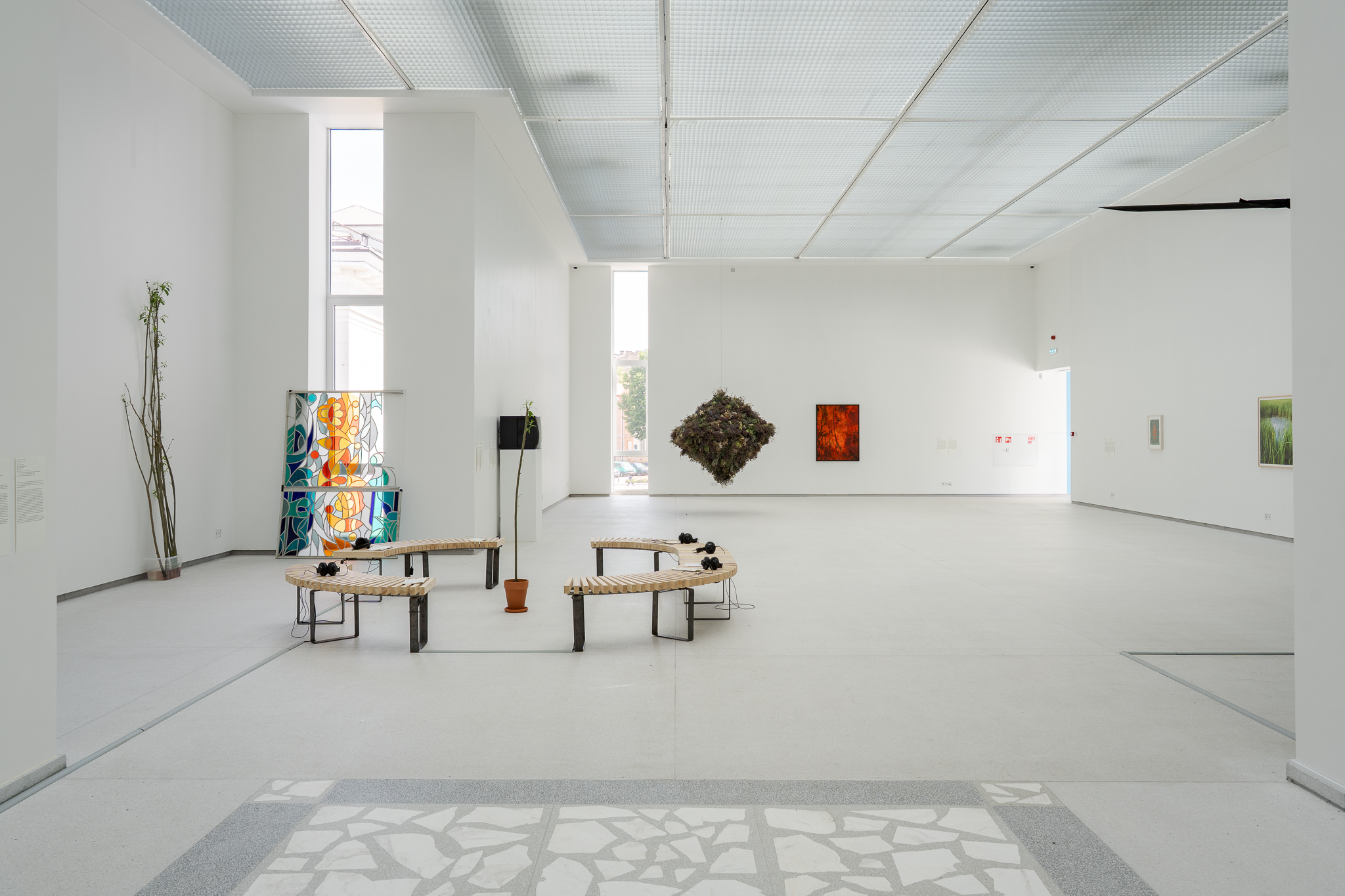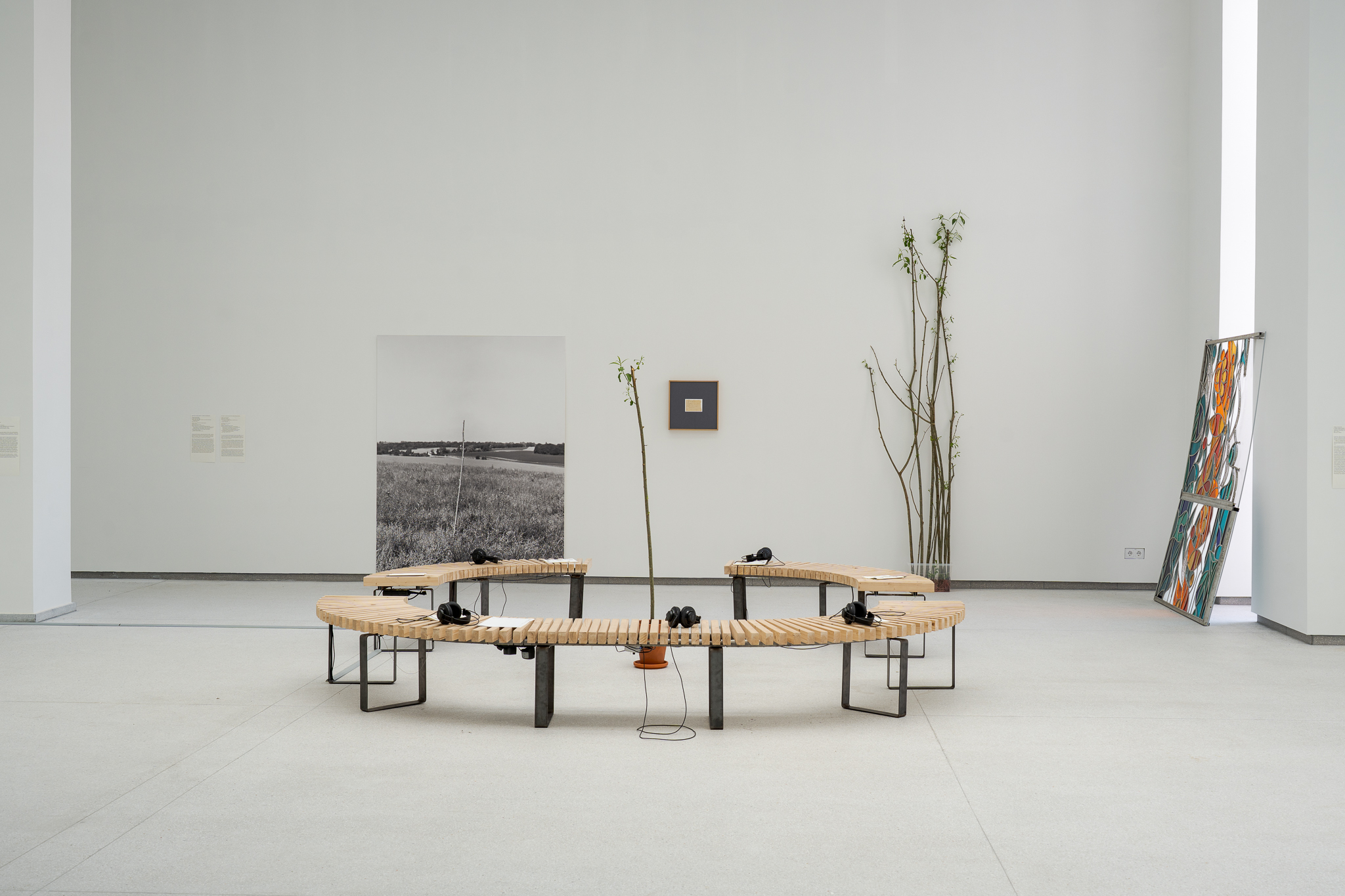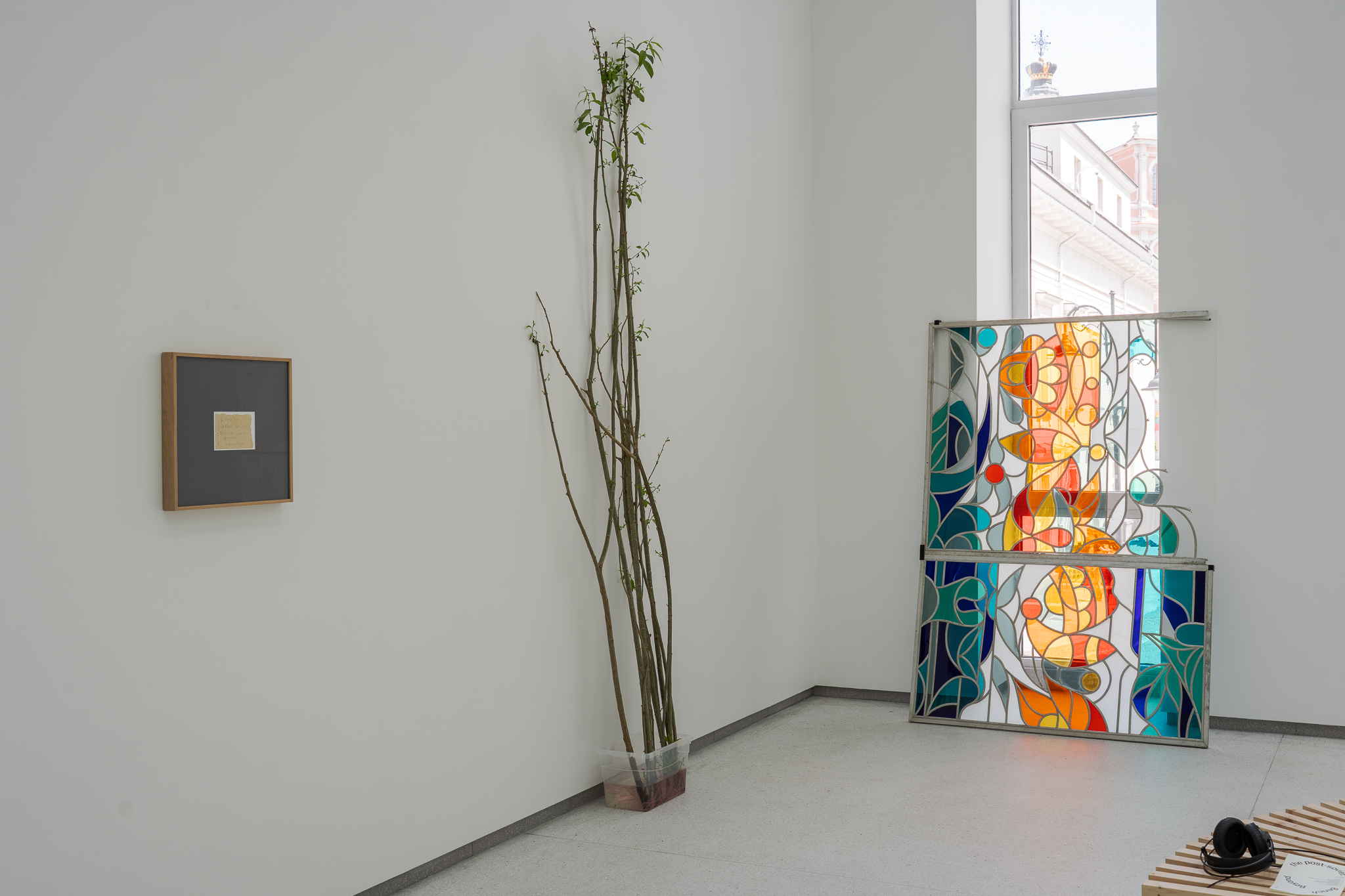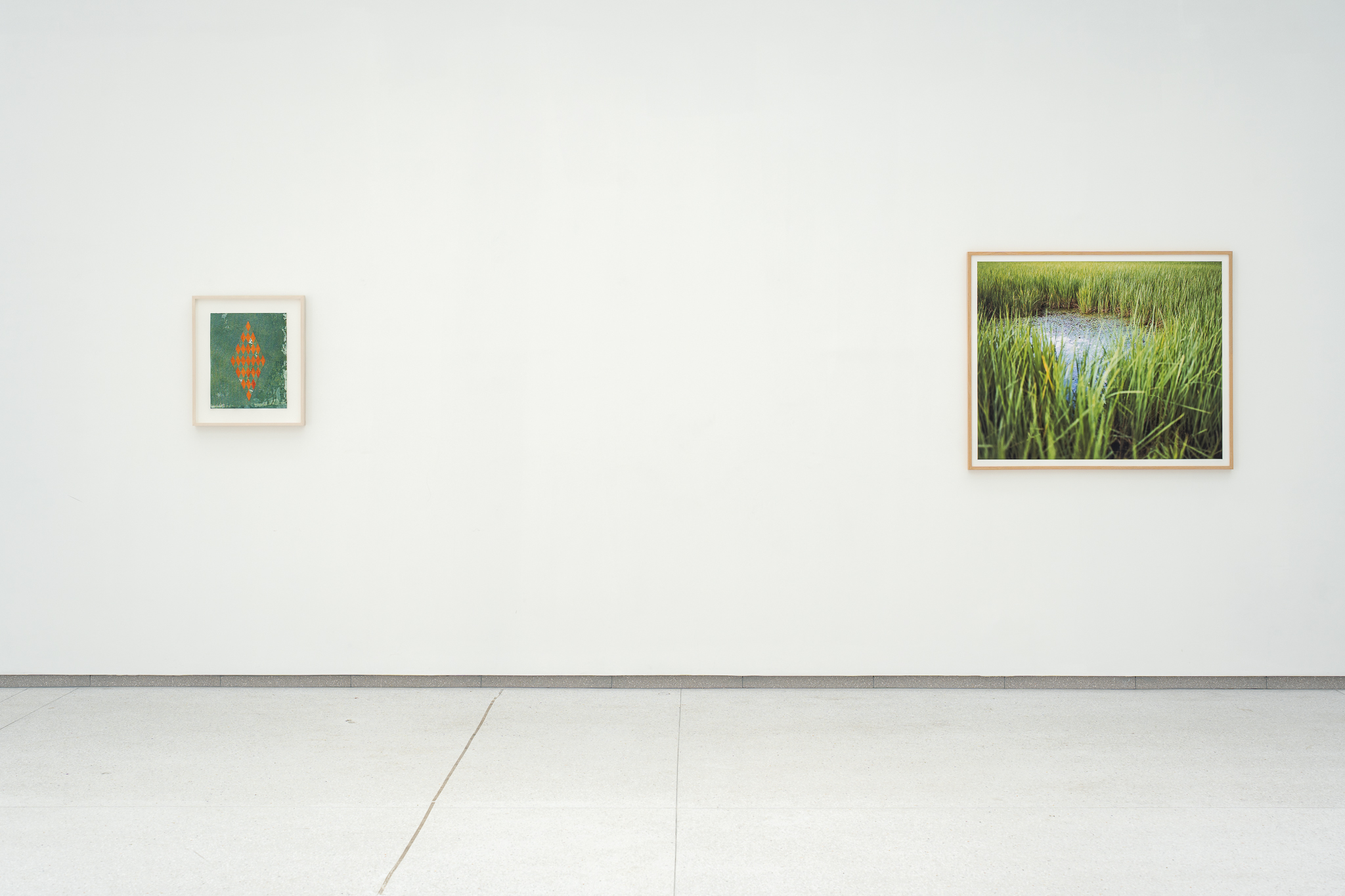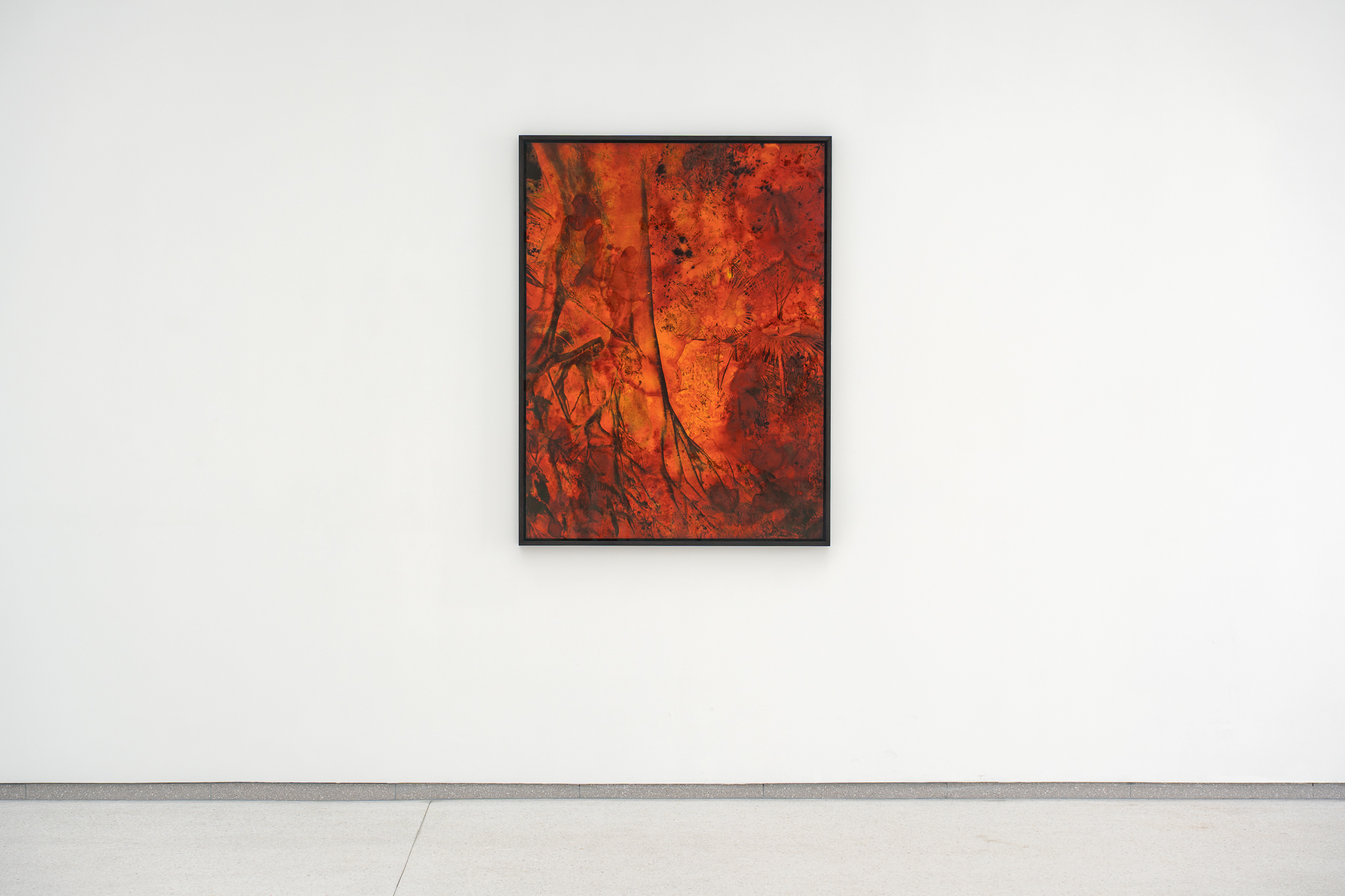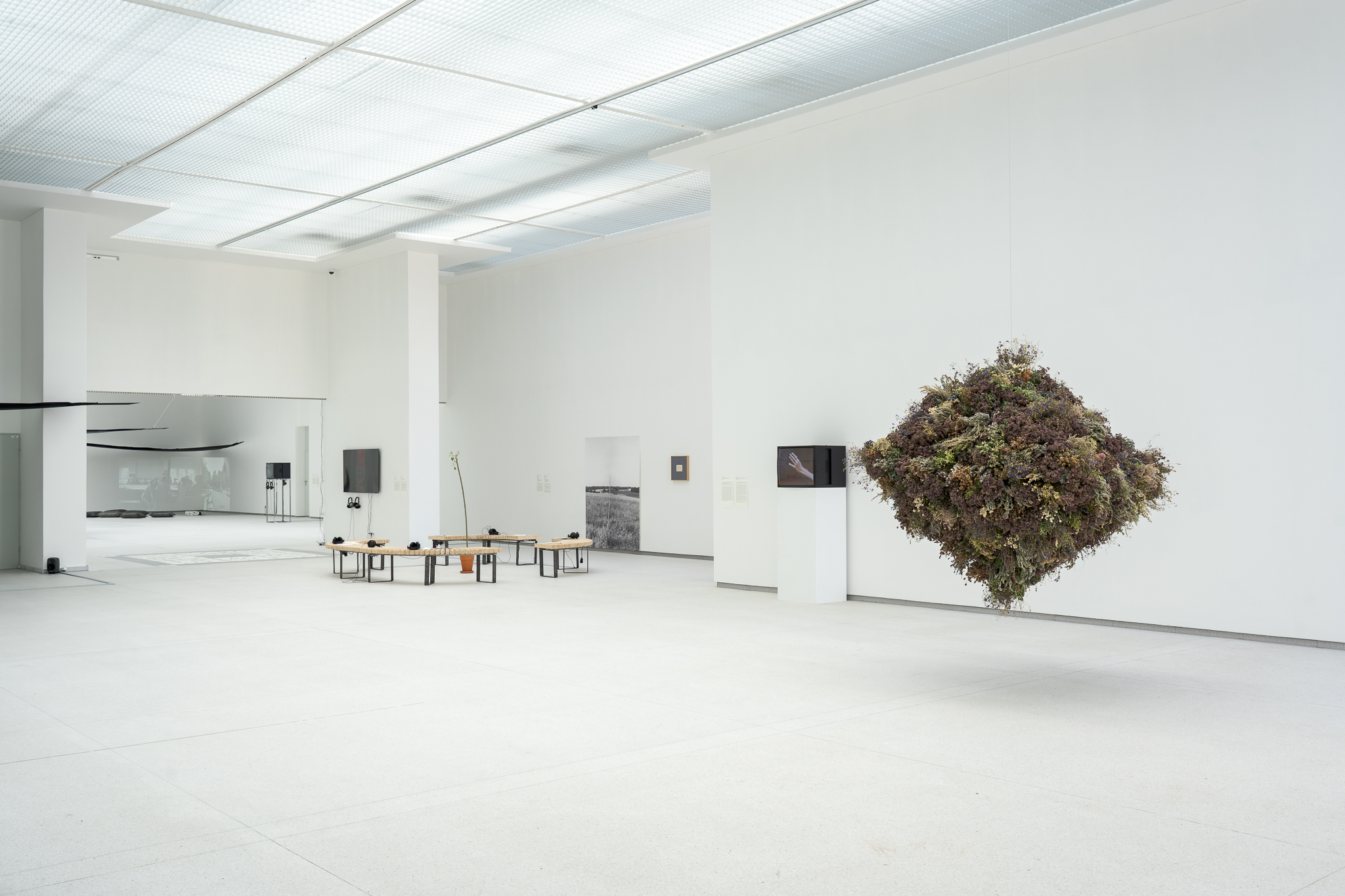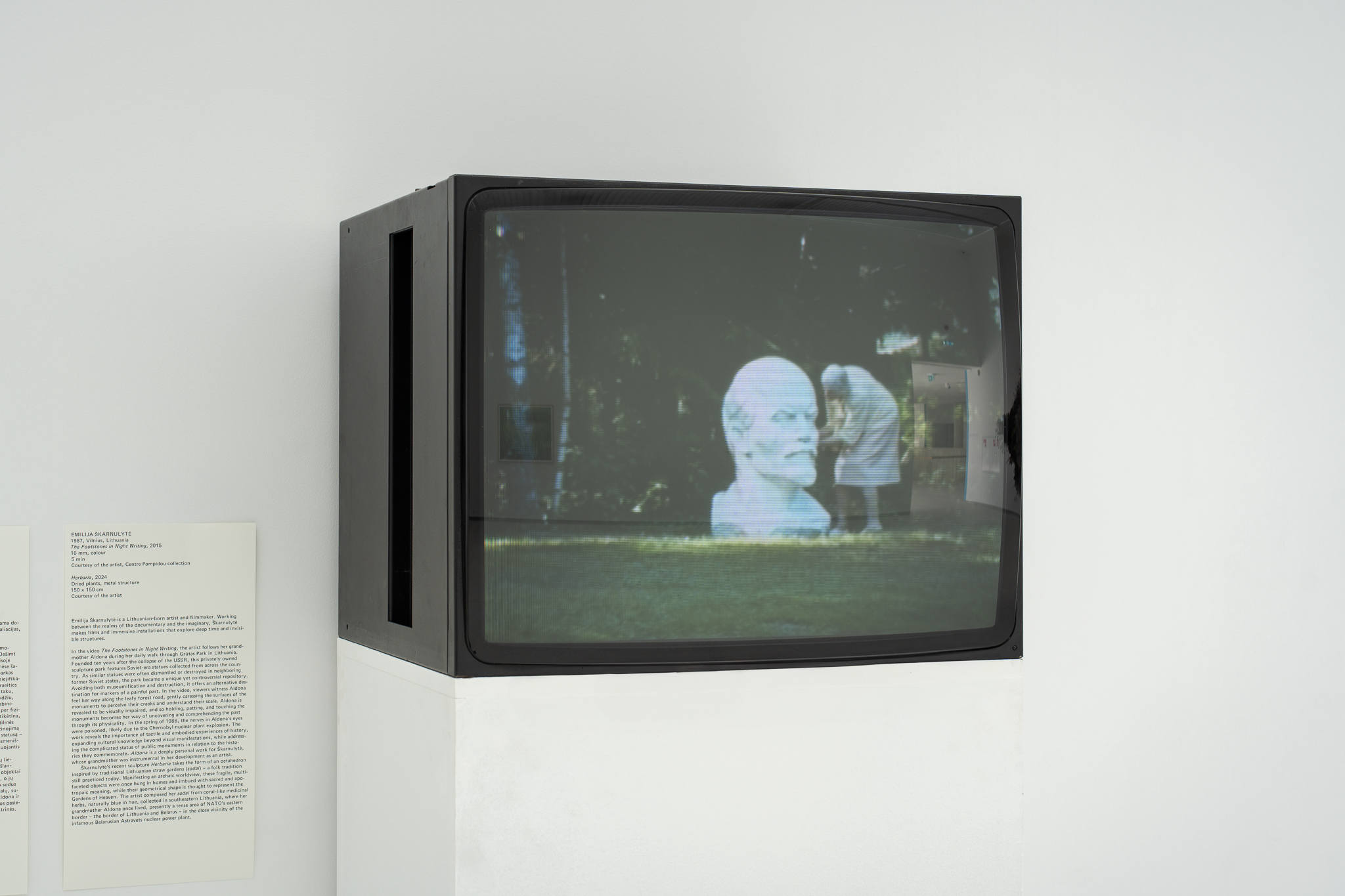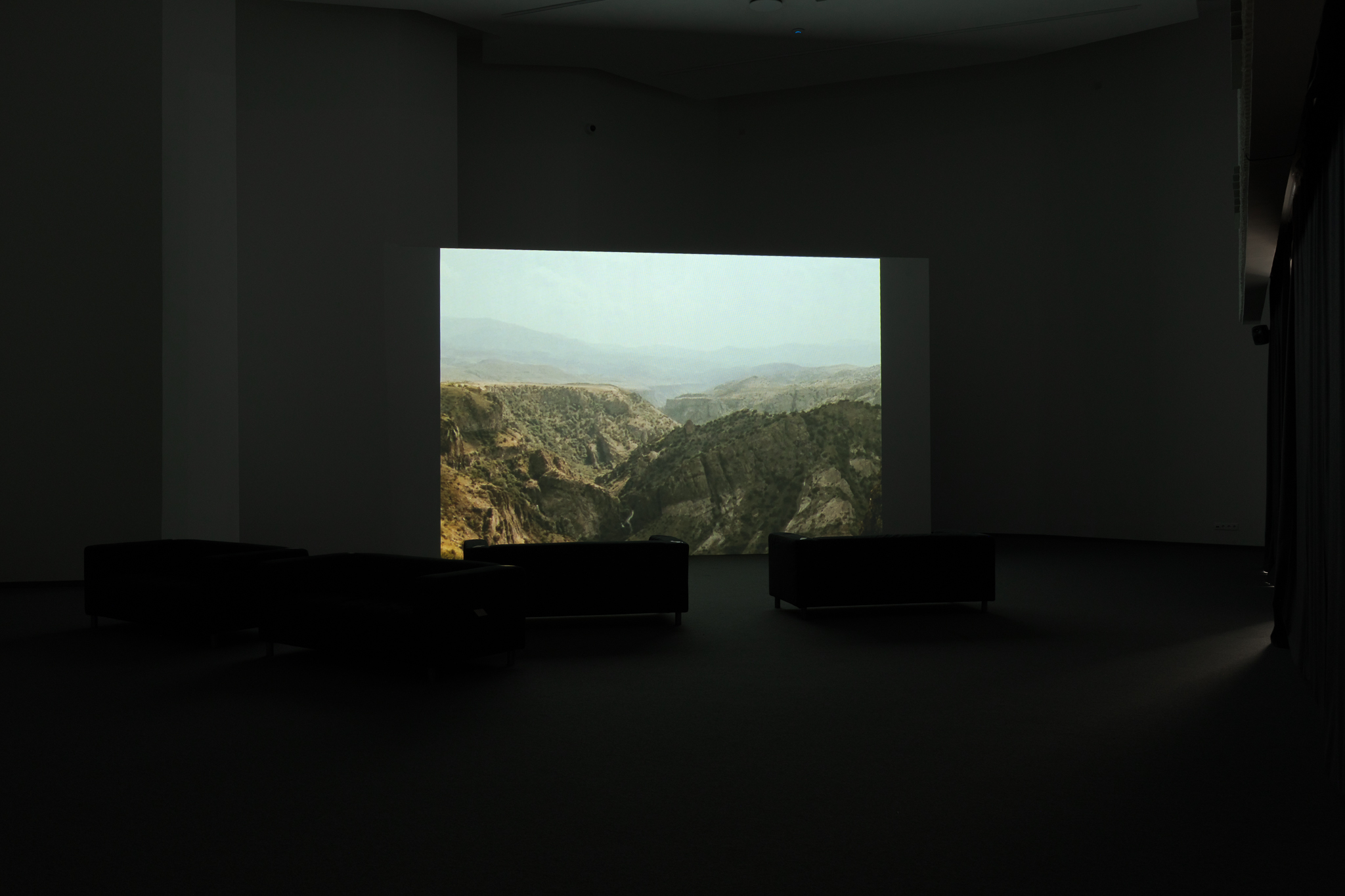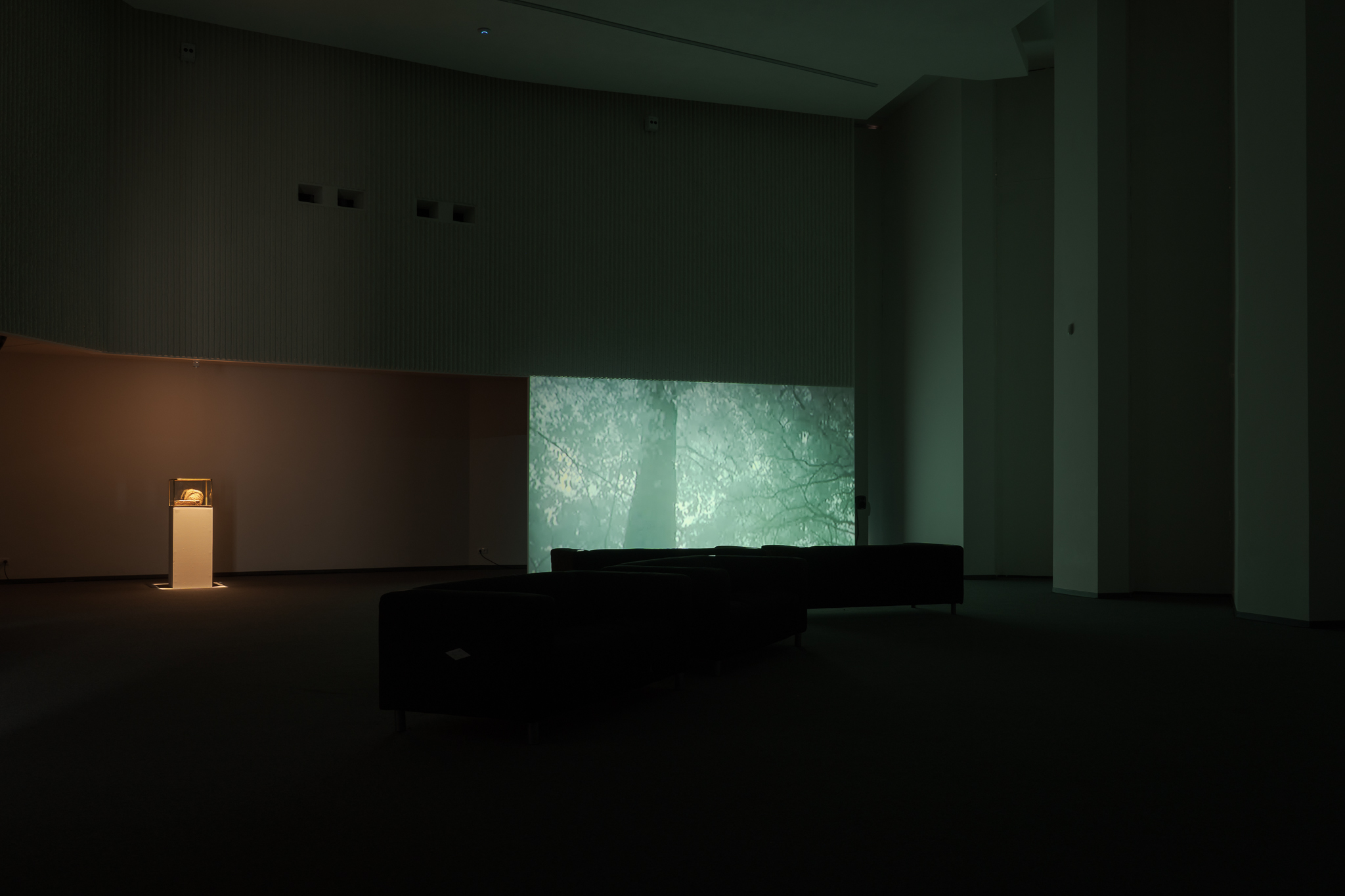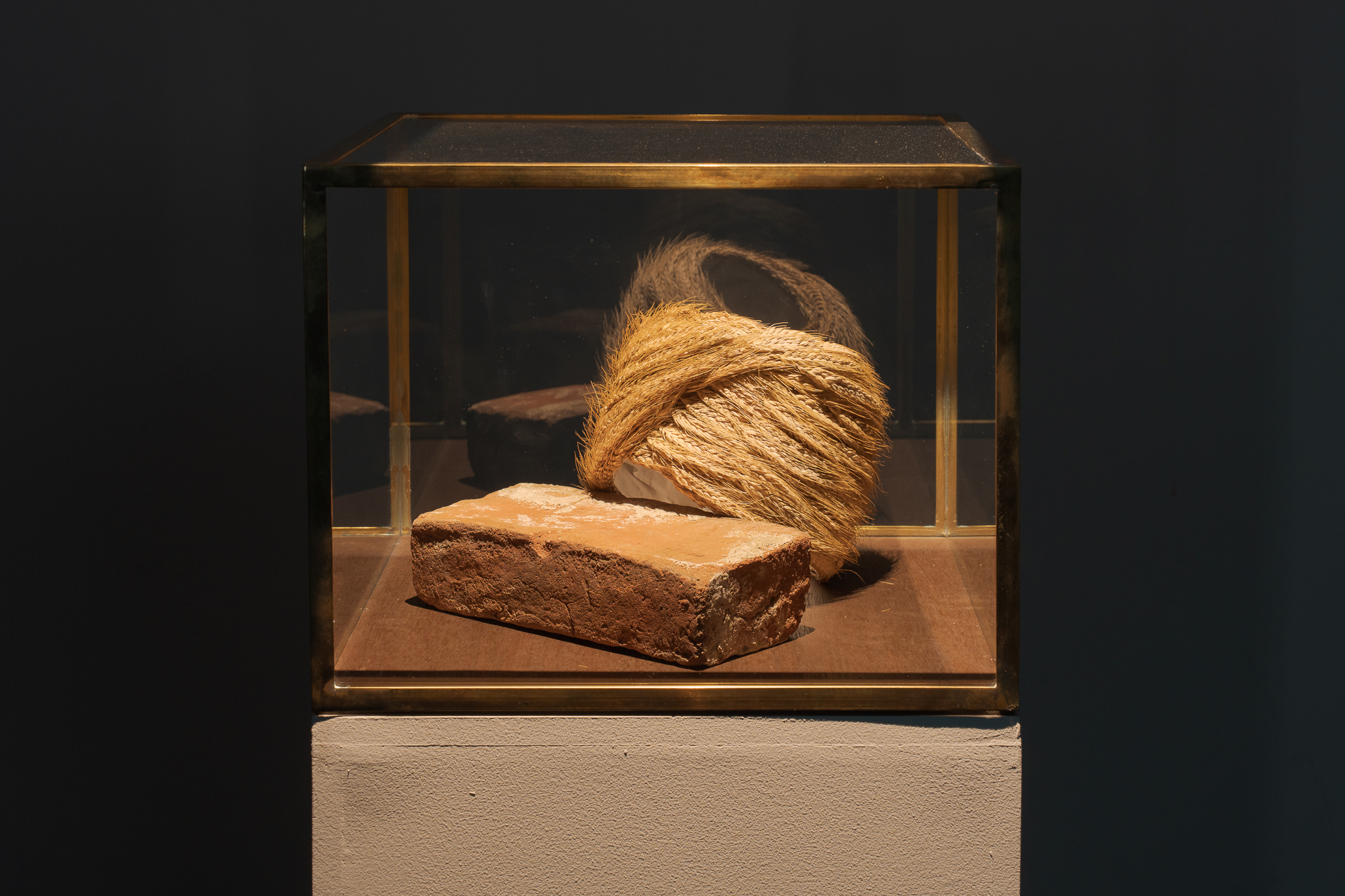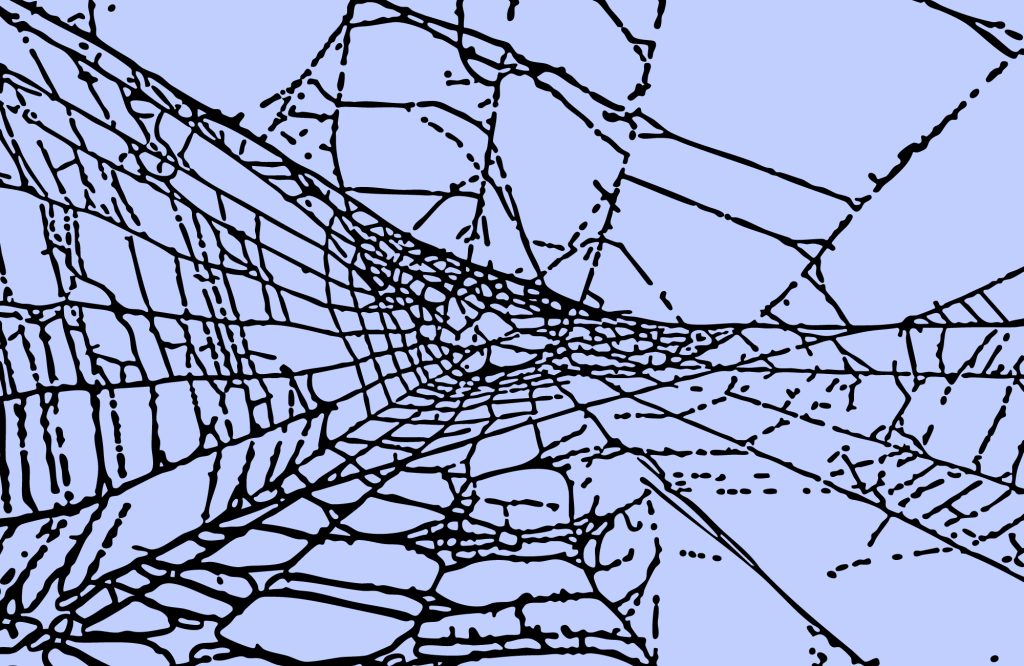
Rooted in the geopolitical turmoil caused by Russia’s war in Ukraine, the exhibition explores the colonial histories of Lithuania and the region beyond, weaving connections into a broader international narrative. Three years after the full-scale invasion began, what forms of normality are possible in the shadow of the ongoing conflict, as we witness history repeating itself again?[1] The exhibition highlights stories from different regions of the world and amplifies decolonial narratives long overshadowed by dominant power discourses.
The title is borrowed from Luba Jurgenson’s essay When we woke up. The Night of 24 February 2022: Invasion of Ukraine (Verdier, 2023): ‘Borders are nocturnal animals, they move while we sleep. We should always be vigilant.’ The exhibition focuses on the threat of invasion, the haunting spectres of past occupations, and the enduring systems of belief and language that carry resilience. The artists featured use imagination, poetry and ancestral wisdom as political tools, alongside more documentary approaches to navigate complex colonial histories, examine present realities, and envision possible futures.
The question of energy is approached through the power dynamics at play with natural resources – forces that shape policies and landscapes – where extractivism emerges as a recurring feature of colonial oppression. The ecological aftermath of exploitation and war is visible in works that document the toxic traces or scars left in the landscape that remain long after. Looking at the landscape transcends generations and evolves into a reflection on historical repetition and deep time. The exhibition also portrays energy as a spiritual drive, and turns to nature as a catalyst of resistance through pre-modern rituals and beliefs that also safeguard cultural identity.
Sienos yra naktiniai gyvūnai / Borders are Nocturnal Animals is the second iteration of an exhibition presented simultaneously at KADIST Paris and the Palais de Tokyo in autumn 2024, in the framework of the Season of Lithuania in France.
This edition is developed in collaboration with KADIST and includes an extensive selection of artworks from its collection, in dialogue with artworks by the artists included in the initial exhibitions in Paris.
[1] The full scale invasion of 2022 began eight years after the onset of the war that followed the annexation of Crimea by the Russian Federation and the outbreak of conflict in Donbas in April 2014.
CURATORIAL TEAM
NERINGA BUMBLIENĖ is a curator and writer whose work engages with contemporary art practices that sensitively reflect upon today’s global challenges while helping to imagine better futures. Often working on projects that involve new commissions, she invites artists into situations that stretch beyond their usual realm of practice.
Bumblienė is the artistic director and curator of the Vilnius Biennial of Performance Art, which held its inaugural edition in 2023. She curated the Lithuanian Pavilion at the 59th Biennale di Venezia in 2022 and has worked as a curator at the CAC in Vilnius since 2014. Her curatorial projects span large-scale international group exhibitions and performance festivals – including co-curating ’Borders Are Nocturnal Animals’ at the Palais de Tokyo and KADIST in Paris in 2024, and Baltic Triennial 13 in 2018 – as well as solo presentations of emerging and established artists, including Augustas Serapinas in 2025, Robertas Narkus in 2023, 2022 and 2020, Pierre Huyghe in 2022, Michael Rakowitz in 2020, Alejandro Cesarco in 2019, Daniel Steegmann Mangrané in 2018, Liam Gillick in 2017 and 2014, among others.
ÉMILIE VILLEZ is a Paris-based curator whose practice focuses on artistic and curatorial methodologies and the construction of institutions and institutional ecosystems. With decentralisation as a guiding principle, she looks to create relationships between artists of different generations and geographies to find new ways of apprehending the contemporary world.
In 2024, she curated ‘Des lignes de désir’, an exhibition featuring 28 graduates from the École des Beaux-Arts de Paris whose work had been commended by that year’s jury. Together with Neringa Bumblienė, she co-curated ‘Borders are Nocturnal Animals’ at the Palais de Tokyo and at KADIST in Paris as part of the Saison de la Lituanie.
